The 100 Best Comic Book Characters of All Time

When you flip through a comic book, you’re looking at a medium that has existed for less than a century. Within those approximate 80 years, comic book stories and the avatars within have graduated from the scrutiny of child psychologists to multimedia empires that annually generate billions of dollars. Arguably, we’re in a golden age: the legacy characters of Marvel and DC have the support of the largest companies in the world, while any writer or artist can transform their own compelling cast into a creator-owned foundation, stewarding the most innovative intellectual properties forward (hello Saga and The Walking Dead).
With so many stories and characters out there, what still resonates and drives us to the comic store every Wednesday? The Paste staff decided to dig deep into their long boxes to identify the faces who shaped some of the most compelling narratives in sequential art. Quantifying characters from such a wide range of genres and eras was undeniably difficult, but a good story is universal. We guarantee that any one of these heroes, villains, lovers or fighters has earned their immortality in comic book history.
![]()
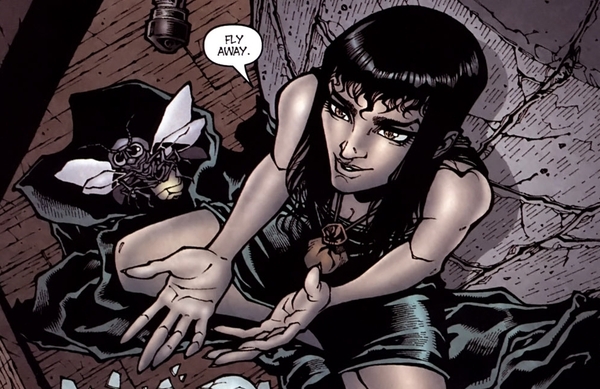 100. Lucas “Dodge” Caravaggio
100. Lucas “Dodge” Caravaggio
First Appearance: Locke & Key #1
Best Writer: Joe Hill
Best Artist: Gabriel Rodriguez
Locke & Key centers on the members of the Locke family, who move into patriarch Rendell’s old New England home in the wake of his grisly murder. The overarching Big Bad of the series comes in the form of an ancient demon who’s entwined with the soul of Dodge, Rendell’s childhood friend. For close to 40 issues, the demon-possessed Dodge wreaks havoc not only in the lives of the Locke children, but anyone even tangentially related to them, all in relentless pursuit of the Omega Key. While comics have no shortage of great demonic characters, it’s Dodge’s unique, twisted brand of cruelty that makes him one of the greats. — Mark Rozeman
![]()
99. Adam Warlock
First Appearance: The Fantastic Four #66
Best Writer: Roy Thomas
Best Artist: Gil Kane
Some of the characters on this list are here because they have become a template or trope for other heroes and villains. Adam Warlock’s role is rooted in un-assimilated weirdness, and little of that has changed in the space god’s 47 years. Yes, with his tendency for cocoon-hatching resurrections, early storylines hint at more than a few Christ parallels, but over time, the character has settled into a near-unique role as a fill-in-the-blank protagonist in any story with cosmic undertones or stakes. — Michael Burgin
![]()
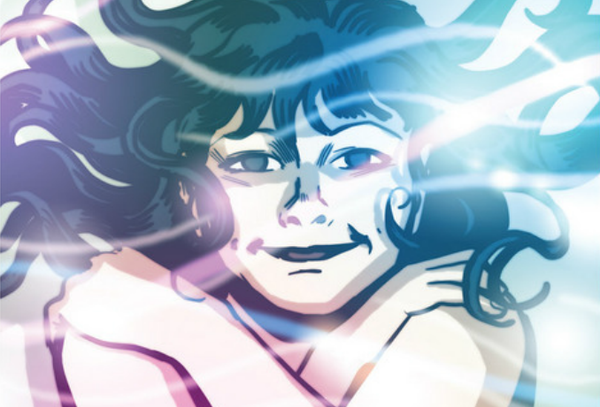 98. Suzie
98. Suzie
First Appearance: Sex Criminals #1
Best Writer: Matt Fraction
Best Artist: Chip Zdarsky
One of the most interesting comic characters we’ve seen in recent years doesn’t fly. She doesn’t have x-ray vision or scale buildings or fight bad guys. She does, however, stop time with her earth-rocking orgasms, and that’s pretty much all you need to know to get the gist of the very hilarious Sex Criminals by Matt Fraction and Chip Zdarsky. Suzie — a sexually liberated librarian who robs banks while in her post-climax “quiet” — is more than you could ask for in the role of Sex Criminals’s deeply troubled (and hilarious, and real) lead character, and she forever sets an example for selfish dudes to be considerate. While Suzie’s conflicted about robbing banks, she’s doing it in the spirit of Robin Hood to give back to her own troubled library. Guys, maybe the special lady in your life could rob banks if you just gave her the extra 50-to-75 percent. — Tyler Kane
![]()
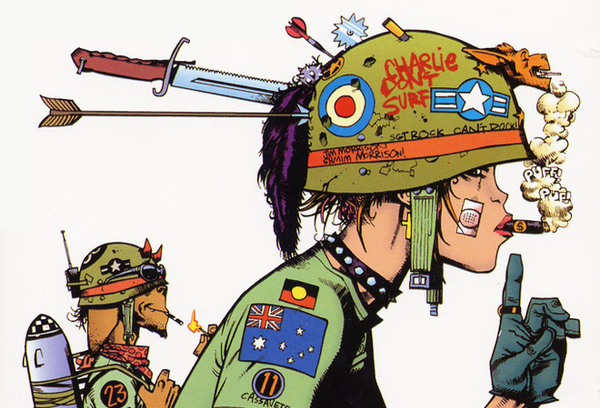 97. Tank Girl
97. Tank Girl
First Appearance: Deadline #1
Best Writer & Artist: Jamie Hewlett
Long before visualizing the cartoon anarchists of Gorillaz with Damon Albarn, British artist Jamie Hewlett devised the perfect grrrl power counterculture icon in Tank Girl. A blinding reflection of the punk groundswell that greeted former Prime Minister Margaret Thatcher’s ultra-conservative legislation, Tank Girl occupied a series of underground comic strips before writers like Peter Milligan cast her in long-form comics and graphic novels. A gorgeous, gratuitous veneer of post-apocalyptic guns ’n ammo excess, Tank Girl evolved the gritty 2001 AD formula with a needed dose of estrogen. — Sean Edgar & Caitlin McGurk
![]()
 96. Tony Chu
96. Tony Chu
First Appearance: Chew #1
Best Writer: John Layman
Best Artist: Rob Guillory
Chew embraces one of the more eye-raising concepts in recent years — a Philadelphia FDA agent draws psychic impressions from whatever he eats to solve crimes, even if it means biting into the occasional human body part now and then. Such a bonkers premise necessitates a great protagonist to keep the story anchored in an emotional reality, and Tony Chu is the man for the job. He’s a fiercely intelligent, grounded character in a world full of crazies. Tony also represents a pleasant oddity in comics — he’s a Chinese-American hero who’s neither a hacker nor ninja/samurai stereotype; in a medium where minority heroes remain unfortunately minimal, Tony is a delightful exception. — Mark Rozeman
![]()
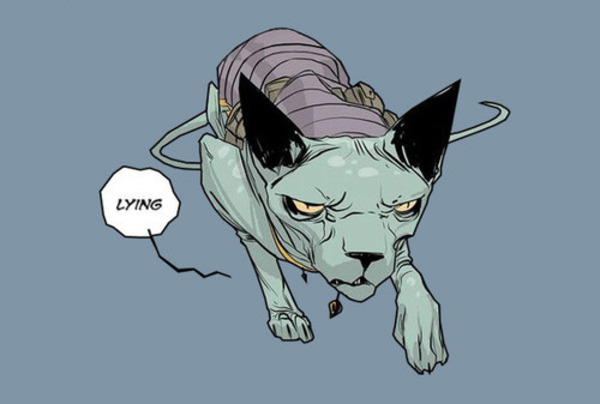 95. Lying Cat
95. Lying Cat
First Appearance: Saga #1
Best Writer: Brian K. Vaughan
Best Artist: Fiona Staples
Don’t be fooled into believing Lying Cat is nothing more than a glorified polygraph. Sure, she only speaks one word — “lying” — whenever she witnesses someone bend the truth, but she also possesses unfathomable depths of loyalty. Lying Cat fights for the individuals she cares about, whether that entails sacrificing an eye in battle or nurturing former child sex slave Sophie:  She makes us weep; she makes us cheer and snort with laughter. In Lying Cat, we find extraordinary heroism in the guise of the quirkiest sidekick. —Frannie Jackson
She makes us weep; she makes us cheer and snort with laughter. In Lying Cat, we find extraordinary heroism in the guise of the quirkiest sidekick. —Frannie Jackson
![]()
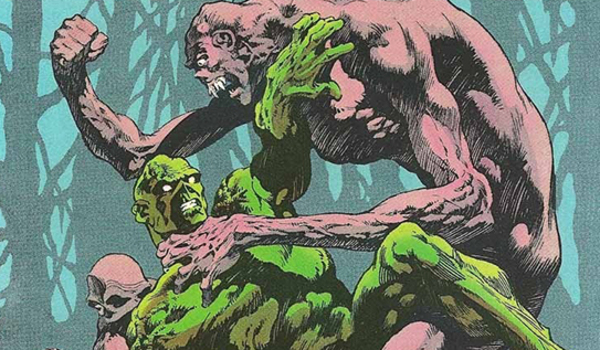 94. Anton Arcane
94. Anton Arcane
First Appearance: Swamp Thing #1
Best Writer: Len Wein
Best Artist: Berni Wrightson
It’s not often that heroes get to stare into the eyes of the villains who killed them — okay, maybe it is — but there was a special brand of evil in the heart of Swamp Thing’s nemesis. Anton Arcane, like Spider-Man’s Venom, is terrifying because he doesn’t take a form you can just kill or send to a supervillain prison. We’ve seen him take on many different forms since Swamp Thing #1 in 1972 — an old man, a demon from Hell, Swamp Thing himself and the recent protector of The Rot (or basically everything that’s dead) — but the same always remains for Alec Holland’s fly-infested foe: he’s a brilliant manipulator with a soul of pure darkness. — Tyler Kane
![]()
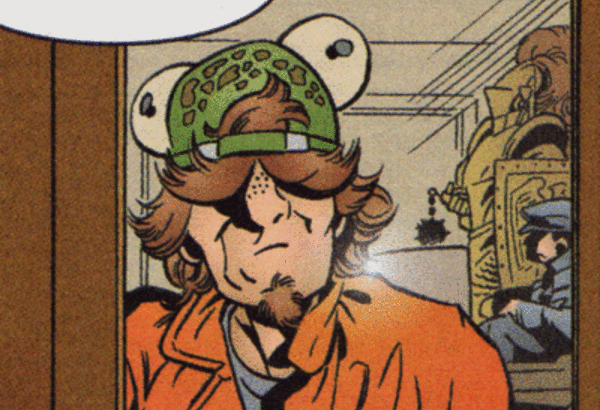 93. Flycatcher
93. Flycatcher
First Appearance: Fables #1
Best Writer: Bill Willingham
Best Artist: Mark Buckingham
Frankly, if you’re a recurring character in Bill Willingham’s Fables, there’s probably an argument to be made to put you on this list. The series is so well-written and the characters so well fleshed-out … if you don’t belong here it’s likely just because Willingham hasn’t gotten to you yet. Still, some arcs stand out, such as the journey of Flycatcher (also known as the Frog Prince or Prince Ambrose) from humble janitor to an Adversary-thwarting king. Bigby Wolf may give the Fables series much of its punch, but Flycatcher is its undeniable heart. — Michael Burgin
![]()
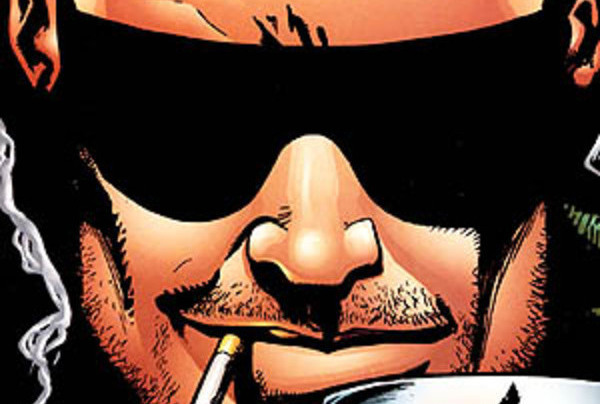 92. Tommy Monaghan
92. Tommy Monaghan
First Appearance: The Demon Annual Vol. 3 #2
Best Writer: Garth Ennis
Best Artist: John McCrea
Garth Ennis’ most underappreciated creation, this sunglasses-wearing assassin (whose Catholic upbringing only lets him take out “bad” people) and the regulars at Noonan’s Sleazy Bar are the motliest crew in comics, prone to mocking superheroes — Batman finds himself on the receiving end of some undigested Indian food, Green Lantern gets stuck with a bar tab and Lobo…you don’t want to know. The crew takes out a bizarre litany of terrifying targets, including zombie dolphins and a T-Rex, while trading stories over endless games of poker. You wouldn’t want to mess with Tommy Monaghan … but you probably wouldn’t mind having a beer with him, either. — Zack Smith
![]()
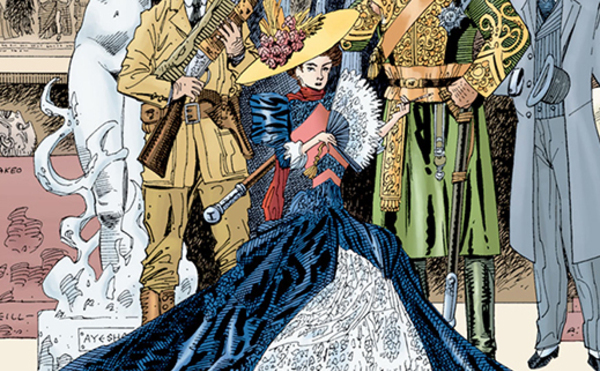 91. Mina Harker
91. Mina Harker
First Appearance: The League of Extraordinary Gentlemen #1
Best Writer: Alan Moore
Best Artist: Kevin O’Neill
I’m sure you’ve noticed, but mainstream comics tend to have a gender-equality issue. The Wonder Womans and Sue Storms of the world are nice, of course, but comics could definitely use more gals like Mina Harker. A former prisoner of stifling Victorian patriarchy, Harker’s experiences with Dracula led to her becoming the leader of The League of Extraordinary Gentlemen, Alan Moore’s Avengers-like super group of famed literary characters. Fiercely independent and unafraid to explore her sexuality, Mina is the kind of person who can verbally dress down her egotistical male counterparts while simultaneously one-upping them in sheer badassery. — Mark Rozeman
![]()
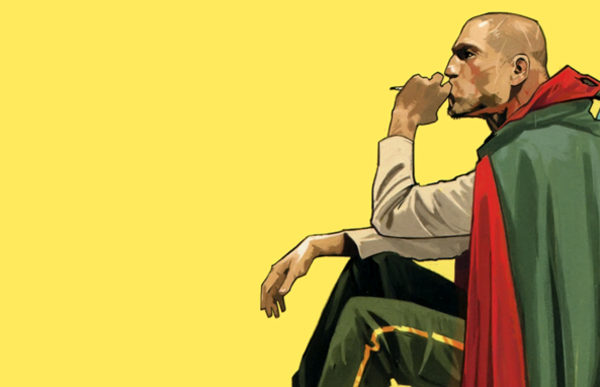 90. The Will
90. The Will
First Appearance: Saga #1
Best Writer: Brian K. Vaughan
Best Artist: Fiona Staples
We aren’t swooning over The Will for his bad-boy mystique and roguish charm — handsome, brooding tough guys are a dime a dozen in comics. What sets The Will apart is the complexity of his characterization. He assassinates people for a living, yet rescues a child from sex slavery. He’s a human with the chiseled jaw of a greek god, but he’s in love with a monstrous arachnid man-eater. We root for The Will, even as he hunts Saga’s protagonists, because he challenges us to reject normalcy and embrace the unconventional. — Frannie Jackson
![]()
 89. Abe Sapien
89. Abe Sapien
First Appearance: Hellboy: Seed of Evil
Best Writer & Artist: Mike Mignola
No one could have expected the twisted, elaborate backstory of the genteel merman hanging out with Hellboy and a crew of government officials way back in “Seed of Destruction.” Alas, Abe Sapien turns out to be a former Victorian cultist whose marine-biology friends preserved his body after he merged with a sea deity. More than the religious and mythological undertones of Hellboy, Abe harkens back to the gothic and fantastic remnants of 19th century esoterica that are largely ignored today, save for the occasional H.P. Lovecraft shout out. This agonizing narrative keeps getting weirder and darker, and as much as we’d all love to see Abe get a happy ending, the rabbit hole he’s currently falling down is endlessly fascinating. — Sean Edgar
![]()
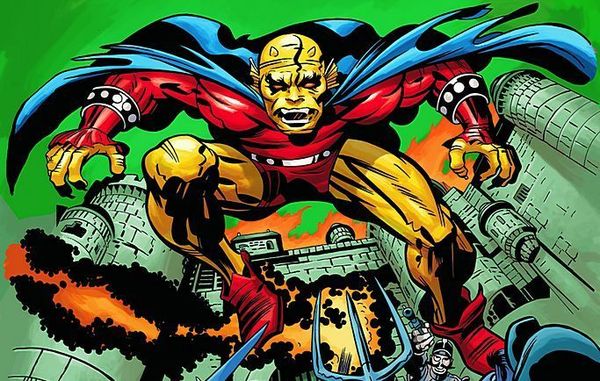 88. Etrigan the Demon
88. Etrigan the Demon
First Appearance: The Demon #1
Best Writer: Garth Ennis
Best Artist: Jack Kirby
Etrigan is a demon of wit and wonder
Who, in a moment, can tear you asunder
Always forced to respond in rhyme and wit
Overwhelmed by his power, opponents always forfeit
Regardless of his constant sing-song tone,
His presence leaves hero or villain chilled to the bone
That’s what’s impressive — this demon’s dichotomy
Whose prose most likely makes writers want a lobotomy
But every time he’s on panel, he makes you grin
Because he’s the demon, Etrigan.
— Darren Orf
![]()
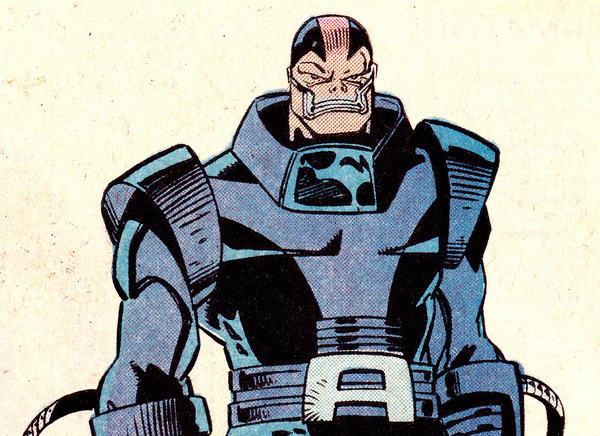 87. Apocalypse
87. Apocalypse
First Appearance: X-Factor #5
Best Writer: Mark Waid, Jeph Loeb
Best Artist: Walt Simonson
The best, or at least the most memorable, moments in comics are the big reveals, and these moments have a few tell-tale signs. When a page ends with a foreboding passage followed by an ellipsis, a scheming villain or a shocking death usually follows. Among these moments, only a few baddies exist who can elicit an audible response that’s some variation of “oh shit.” Apocalypse is definitely one of them. When this dude is around, trouble is brewing. Remember when he conquered the ENTIRE MARVEL UNIVERSE (it may have been retconned into Earth-295, but still).
Many find Apocalypse’s moniker a little heavy-handed with its biblical connotations, but it’s not an overstatement when the guy lives up to the name. Easily the most powerful foe in the mutant universe (the Phoenix is a cosmic being, so don’t go there), he also comes with his own group of minions, known as the Four Horsemen. Though he was supposedly destroyed, Apocalypse’s reign of terror has left mental and physical scars across Earth-616, cementing the ancient mutant’s name through his catastrophic wake. — Darren Orf
![]()
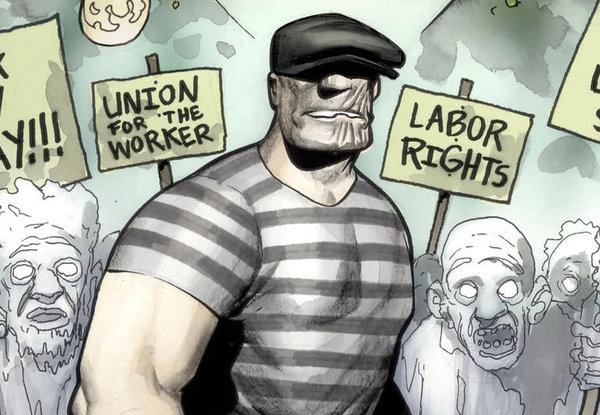 86. The Goon
86. The Goon
First Appearance: Dreamwalker #0
Best Writer & Artist: Eric Powell
The Goon is the quintessential strongman and the most memorable character from the mind of writer/artist Eric Powell. A vehicle for Powell’s own ruminations on social issues, the comic industry or funny shit in general, The Goon often moves beyond slapstick into much more subversive territory. He’s quick to throw a punch and mumble a witty retort to his pint-sized companion, Franky, and he’s known broadly as the neighborhood rough houser and excessive drinker. Although he’s all of these things, many of The Goon’s stories, especially the heart-wrenching Chinatown tale, reveal a deeper side to the mountain of malice and muscle. The Goon mirrors his namesake: dark, cynical, and unwilling to pull punches. It’s a comic and a character that can make you laugh and think simultaneously — a combination that’s rare in any medium. — Darren Orf
![]()
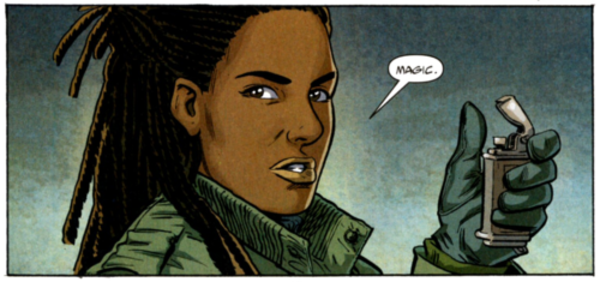 85. Agent 355
85. Agent 355
First Appearance: Y: The Last Man #5
Best Writer: Brian K. Vaughan
Best Artist: Pia Guerra
In a world devoid of men, Agent 355 manages to stand out amongst throngs of women. A confident bodyguard, she devotes herself to protecting the last man on earth — even at the expense of her own happiness. Whether she’s kicking a ninja’s ass or knitting in her pajamas, Agent 355 earns our respect and admiration as she represses her own internal desires. — Frannie Jackson
![]()
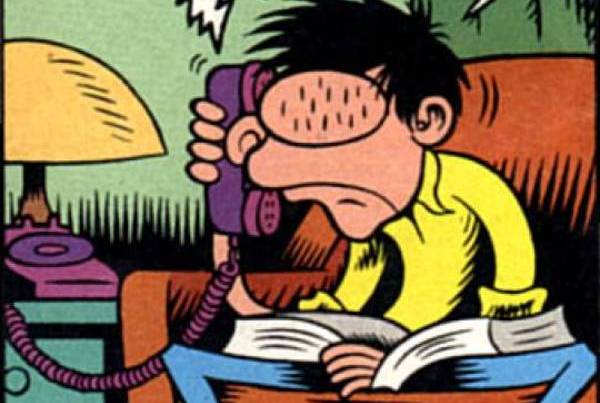 84. Buddy Bradley
84. Buddy Bradley
First Appearance: Comical Funnies
Best Writer & Artist: Peter Bagge
Generation X’ers might’ve known when they were being pandered to, but they weren’t always good at knowing when they were being made fun of (or else they just liked laughing at themselves). Peter Bagge’s semi-autobiographical Buddy Bradley isn’t a character to look up to or emulate — he’s a petty, cynical, hate-filled loser who’s too self-absorbed to have any true friends. For some, though, Bagge’s early ‘90s hipster caricature was the closest comics got to depicting the world Gen X’ers knew, or at least the world they thought would make them look cool if they acted like they knew it. Through Buddy, Bagge bitingly dredged up the paranoia at the core of every ‘90s alt doofus. — Garrett Martin
![]()
 83. Dashiell “Dash” Bad Horse
83. Dashiell “Dash” Bad Horse
First Appearance: Scalped #1
Best Writer: Jason Aaron
Best Artist: R.M. Guera
There are antiheroes and then there’s Dash, the “hero” of Jason Aaron’s Indian reservation-set noir. A seemingly ruthless “borderline sociopath” with a shaved head and a thirst for nunchucks-induced violence, Dash spends a good portion of the comic torn between his FBI supervisors and the reservation’s local crime boss. Much like he does with the series as a whole, however, Aaron soon peels away the layers to reveal something far more complex, eventually using Dash’s experiences to broach broader issues regarding the plight of modern day Native Americans and the cyclical entropy of reservation life. By the end of the series, you may not completely align yourself with Dash, but damn if you don’t understand where he’s coming from. — Mark Rozeman
![]()
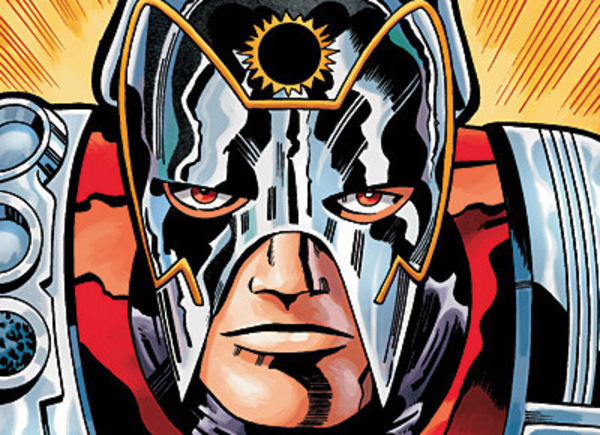 82. Orion
82. Orion
First Appearance: New Gods #1
Best Writer & Artist: Jack Kirby
Jack Kirby took the nature vs. nurture argument to new heights with his New Gods epic, a grand mythology that repurposed Abrahamic plot beats into a Technicolor space opera. Almost any one of the gods could slide into this list; the Freon degree of cool surrounding Mr. Miracle, Big Bartha and the sinister Apokolips crew is undeniable. That said, Orion, son of ubervillain Darkseid traded to heavenly New Genesis as an infant, takes special notice. Orion overcame his diabolical lineage to soar around on an astro-harness and challenge his birth father for the planetary equivalent of hell. Reread that last sentence and thank the gods, new or otherwise, for Jack Kirby. — Sean Edgar
![]()
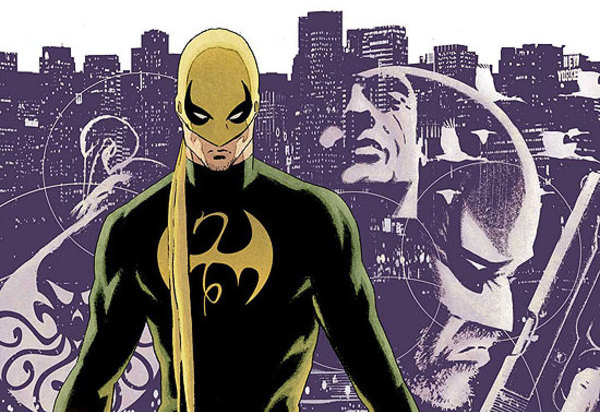 81. Iron Fist
81. Iron Fist
First Appearance: Marvel Premier #15
Best Writer: Matt Fraction
Best Artist: David Aja
As Matt Fraction has stated on multiple occasions, the “kung-fu billionaire” concept isn’t exactly a hard pitch. In addition, Iron Fist wielder Danny Rand comes with an elaborate backstory involving mystical cities, carnivorous business dealings and lots of punching. It’s ‘70s Wuxia grindhouse elation, with compelling racial commentary informed by Rand’s Heroes For Hire relationship with Luke Cage and the obvious Asian Cinema trimmings. The character’s aughties resurrection by Matt Fraction combined with Kaare Andrews’ Iron Fist: The Living Weapon relaunch have ensured that Iron Fist truly is immortal. — Sean Edgar
![]()
 80. Kevin Matchstick
80. Kevin Matchstick
First Appearance: Mage: The Hero Discovered #1
Best Writer & Artist: Matt Wagner
Kevin Matchstick isn’t so much an actor as a guide, escorting the reader into writer/artist Matt Wagner’s examination of modern mythology in Mage: The Hero Discovered and Mage: The Hero Defined. The beauty of Matchstick is that he takes Joseph Campbell-heavy themes and makes them undeniably interesting and grounded. Aided by Wagner’s gorgeous line work (the artist and character bear more than a few visual similarities), Matchstick fights dragons and tumbles down the monomyth with reluctance and honesty, wielding Excaliber incarnated in a baseball bat. If Matchstick were the default teacher of other pop art academia, there would never be another empty classroom. — Sean Edgar
![]()
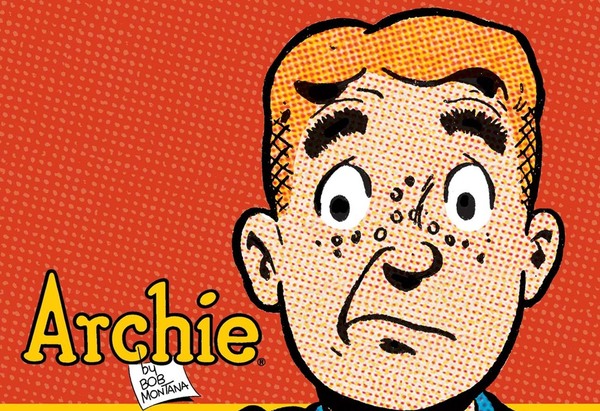 79. Archie Andrews
79. Archie Andrews
First Appearance: Pep Comics #22
Best Writer & Artist: Bob Montana
As a character, Archie’s not that interesting. He’s a typical mid-century American (white, middle-class) teen: a boringly pleasant, hetero horn-dog with the sort of “problems” (car, girl, money) that could only be considered problems by the middle-class. As the centerpiece for one of comics’ largest and longest-running cast of characters, though, Archie is a perfectly calibrated place-holder — a sounding board for his diverse friends and the idiosyncratic faculty of Riverdale High. And if Archie seems a little stereotypical, that’s because (along with Mickey Rooney’s Andy Hardy) his character basically created the template for the American teenager. — Garrett Martin
![]()
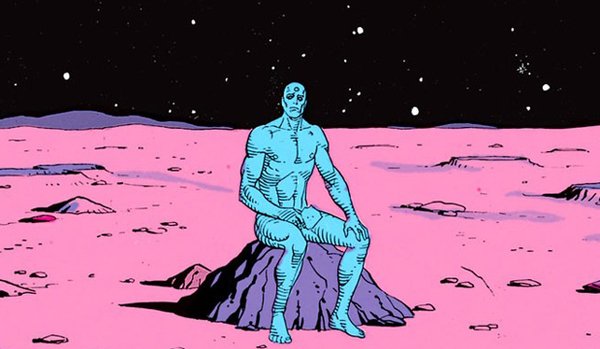 78. Dr. Manhattan
78. Dr. Manhattan
First Appearance: Watchmen #1
Best Writer: Alan Moore
Best Artist: Dave Gibbons
It’s hard to think of a more powerful hero than Watchmen’s Dr. Manhattan, born after physicist Jon Osterman was trapped in an intrinsic field subtractor in the ‘50s. When his body reassembled atom-by-atom, a deity formed — one so powerful that Nixon himself called upon the hero to intervene when Vietnam got rough. Dr. Manhattan’s detachment from humanity is almost understandable; the post-human sports telekinesis, matter control and clairvoyance. What earthly pleasures could keep a god happy? — Tyler Kane
![]()
 77. Michonne
77. Michonne
First Appearance: The Walking Dead #19
Best Writer: Robert Kirkman
Best Artist: Charlie Adlard
The laconic ronin of the zombie apocalypse and an integral member of Rick Grimes’ band of survivors, Michonne quickly became a fan favorite for her katana skills and penchant for dragging around leashed, armless walkers. But what really sets her apart is her capacity for brutality — and not just in killing zombies. She reveals what even good people are capable of when pushed to the breaking point. After bearing the brunt of The Governor’s sadism, her revenge involves a massive amount of maiming and mutilation (not to mention her cringe-inducing use of a spoon). That said, the brief moments of humanity that shine through Michonne define the grey morality that saturates The Walking Dead universe. — Robert Tutton
![]()
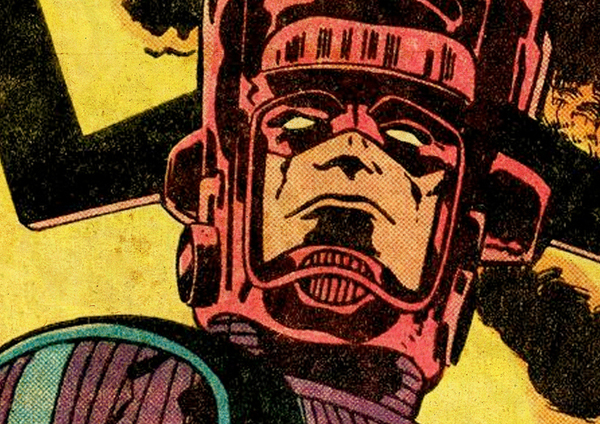 76. Galactus
76. Galactus
First Appearance: The Fantastic Four #48
Best Writer: Stan Lee
Best Artist: Jack Kirby
Please, for god’s sake, let’s forget the “Galactus” in the execrable Fantastic Four: The Rise of the Silver Surfer. (In fact, forget everything about that movie, if you can.) While superheroes have defused many Earth-destroying threats over the decades, Galactus represented perhaps the most implacable. His original arc in the pages of the The Fantastic Four (#48-50) is a classic, and his level of menace, metaphysical. Somehow, in a world filled with power-hungry tyrants, an impersonal destroyer of worlds — dude’s gotta eat — terrifies on a whole different level. — Michael Burgin
![]()
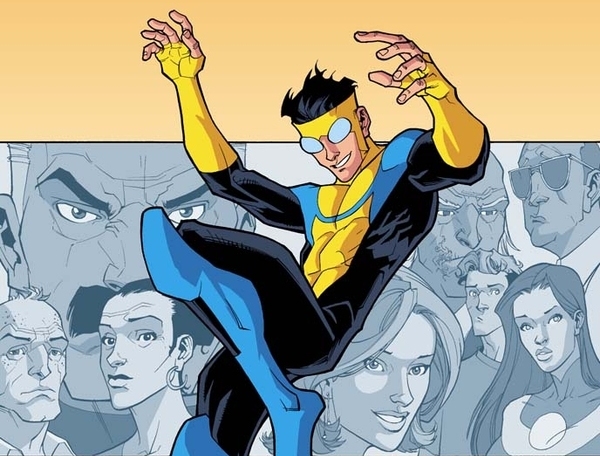 75. Invincible
75. Invincible
First Appearance: Tech Jacket #1
Best Writer: Robert Kirkman
Best Artist: Ryan Ottley
At his core, Robert Kirkman’s young hero represents an intriguing mix of Peter Parker-meets-Kal-el. The storylines here are seldom predictable, mixing a vast framework of beats established by Marvel and DC over decades in new and astonishing ways. So much happens in the course of any single Invincible arc (betrayals! new brothers! death! more death!) that this comic book bildungsroman avoids anything remotely resembling a status quo, relying on its winsome lead to be the glue behind an aggressively-shifting narrative. But when your character is as pure and likable as Grayson, there isn’t much that could happen to keep you from devouring next month’s chapter to discover how everyone’s favorite hero-in-training will greet his next earth-shaking conflict.
![]()
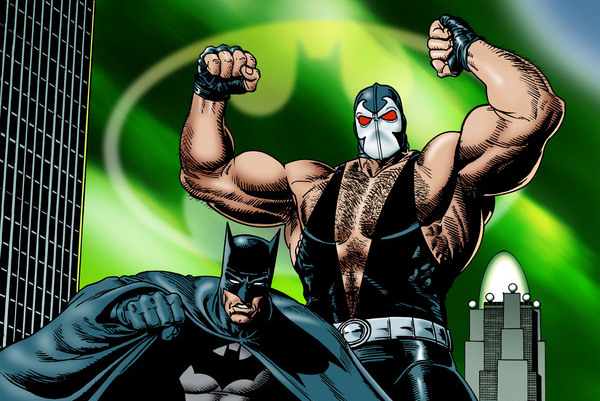 74. Bane
74. Bane
First Appearance: Batman: Vengeance of Bane #1
Best Writer: Chuck Dixon
Best Artist: Brian Bolland
Like The Joker, the scariest thing about Bane is his motives (or lack thereof). The beastly man infamously put Batman out of commission in the Knightfall comics, forcing a broken Bruce Wayne to let Jean-Paul Valley take over the Dark Knight mantle. Bane’s a terrifying foe, born in darkness and raised to thrive on terror—not endure it. As badly as he was botched in Batman and Robin, his first on-screen appearance, Tom Hardy later knocked the role out of the park in The Dark Knight Rises. — Tyler Kane
![]()
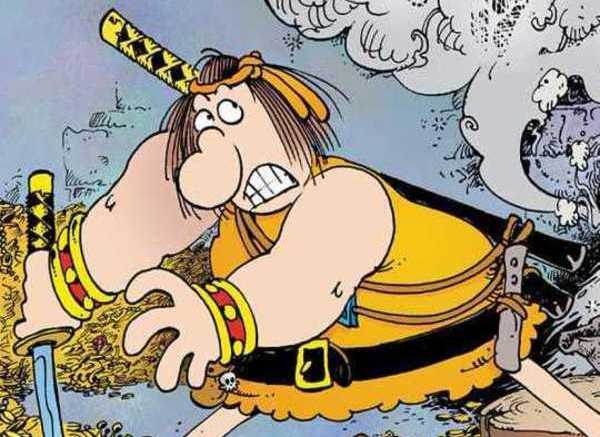 73. Groo the Wanderer
73. Groo the Wanderer
First Appearance: Destroyer Duck #1
Best Writer & Artist: Sergio Aragonés
Mad Magazine vet Sergio Aragones obliterated the swords and sandals archetype with Groo, a bumbling barbarian who can shake a mean saber but isn’t good at much else. Groo greets massive battles with nothing to rely on except a steady stream of testosterone and his blades. He extends the eccentric idiocy of male comic protagonists not just to Medieval brawlers, but to all violence-prone heroes in the medium. Though he was created in the ‘70s, much of Groo’s chaotic, exaggerated wit seeded a future where characters like The Tick could continue to skew the tights and muscles crowd. — Sean Edgar
![]()
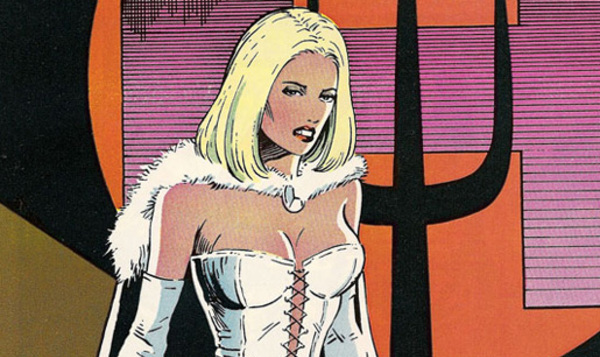 72. Emma Frost
72. Emma Frost
First Appearance: Uncanny X-Men #129
Best Writer: Joss Whedon
Best Artist: John Byrne
No X-character has undergone a makeover quite like Emma Frost, the former White Queen. With her Uncanny X-Men introduction in 1980, Chris Claremont presented Emma as vacuous arm candy, a cold-hearted right hand to the Hellfire Club’s Sebastian Shaw. Fast-forward to recent years, where she still maintains her icy veneer but devotes herself to the betterment of mutant kind … or so we think. What makes Emma Frost so terrifying is how readers must constantly question if she’s helping the team or manipulating key players from the background.
Emma’s mutant powers highlight her precarious position. On the one hand, she’s able to read people, friend or foe, like an open book via telepathy. She’s a keeper of secrets, a white-clad vixen who almost always knows the true motivations of those around her. Yet her diamond-skin mutation emphasizes her isolation; powerful psychics and adamantium claws are equally unable to pierce her rock-solid exterior. This power combo makes Emma an outsider, mistrusted by her mutant teammates while the curse of Shaw’s Hellfire Club hangs over her head. This constant pressure would be enough to make some of the brawniest superheroes crack; luckily for Emma, diamonds don’t fracture. — Darren Orf
![]()
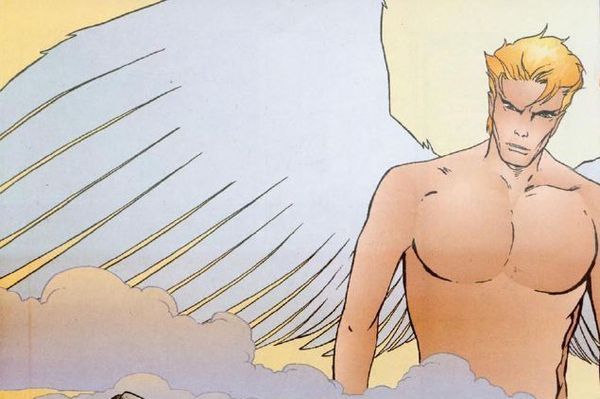 71. Lucifer
71. Lucifer
First Appearance: The Sandman #4
Best Writer: Mike Carey
Best Artist: Peter Gross
Vertigo has always delighted in challenging its readers on issues of good vs. evil, but taking Neil Gaiman’s interpretation of Satan from The Sandman and giving the character 11 volumes of cerebral exploration was truly inspired. Writer Mike Carey and artist Peter Gross concocted a thinking-man’s fantasy anchored by a troubling, sociopathic lead. Powerful and cunning, Lucifer cared little for those around him (poor Mazikeen) yet jolted his stories forward with arrogance and style. All of the creative majesty birthed by this series — like a pool that simulated God’s thoughts — mattered little without The Morningstar unraveling his enemies’ plans five moves back, usually at the expense of his alleged allies. Evil has never been so intriguing. — Sean Edgar
![]()
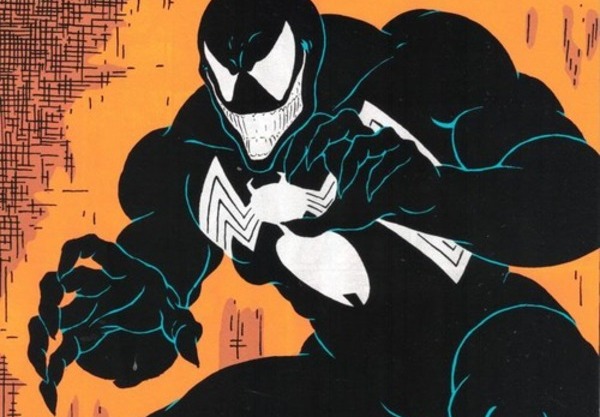 70. Venom
70. Venom
First Appearance: The Amazing Spider-Man #252
Best Writer: David Michelinie
Best Artist: Todd McFarlane
Though Doc Ock or the Green Goblin may be the first to come to mind as premier Spider-Man foes, my favorite has always been the symbiote-fueled alien Venom, appearing relatively late in 1984’s The Amazing Spider-Man. Although the symbiote originally attempted to latch onto our favorite wall crawler, Spider-Man rejected the sentient black goo, forcing it to bond elsewhere — most famously to Eddie Brock, who quickly became one of Spider-Man’s most terrifying foes. Out of any high-flying villain, Venom is the most equipped to take on Spider-Man one-on-one. He’s got the web-slinging powers, the brawn and none of that “great responsibility” rhetoric. Say what you will about the Venom-featuring Spider-Man 3 film, but those symbiote-heavy storylines (especially when terrifying Symbiote Carnage got involved) ushered in a creepy, sociopathic edge to mainstream comics that would lay the aesthetic groundwork for years to come. — Tyler Kane
![]()
 69. Silver Surfer
69. Silver Surfer
First Appearance: The Fantastic Four #48
Best Writer: Stan Lee
Best Artist: Moebius
Q: How do you give a character who’s essentially a fad incarnation a lasting punch? A: Introduce him as an accomplice to one of the great Marvel villains, give him an unforgettably sleek design and then try your damnedest to make him a sympathetic character. Despite his outlandish trappings and otherworldly origins, it’s impossible not to feel for the no-win situations in which Norrin Radd is placed. He saves his love (and planet) by forever leaving her (and it), finding good eats for a world-devouring cosmic entity, yet strives to avoid worlds with intelligent life. Radd eventually opposes the aforementioned world eater, leading to an existence chained to a planet where he’s isolated as a super-powered “other.” At least Superman could take a break as Clark Kent and hang out with unaware humans; that’s hard to do when you’re coated with silver and toting a surfboard. — Michael Burgin
![]()
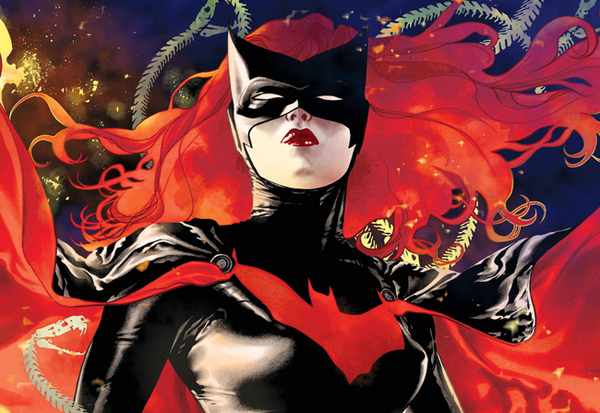 68. Batwoman
68. Batwoman
First Appearance: Detective Comics #233
Best Writer: Greg Rucka
Best Artist: J.H. Williams III
Batwoman may wear a familiar cape and cowl, but she carries a unique pathos when confronting a morbid side of Gotham rarely seen in other Bat-related stories. After resigning from the military because of her sexuality, Kate encounters a long-lost twin who leads a gang of monsters devoted to a religion of evil. This may seem like a volatile mix of story elements, but it completely works. Batwoman represents staunch order in dizzying chaos, using what few resources she has to neutralize Lovecraftian threats on a regular basis. Such odds would seem unrealistic if the hero didn’t display a singular gravitas and humanity, making her personal struggles just as absorbing as the mind-melting blowouts punctuating every story arc. — Sean Edgar
![]()
 67. Captain Haddock
67. Captain Haddock
First Appearance: Tintin: The Crab with the Golden Claws
Best Writer & Artist: Hergé
Hergé’s Tintin remains one of the great, heroic protagonists in comics. But, let’s face it — Tintin’s boundless idealism and upstanding nature can be a bit dull at times. Enter Captain Haddock, a rum-guzzling, sardonic Merchant Marine Captain quick to undercut his accomplice’s Boy Scout demeanor. Together, the two form one of the most endearing odd-couple pairings of all time. Every hero needs his foil, and Haddock represents one of the most lovable and humorous examples of this archetype. — Mark Rozeman
![]()
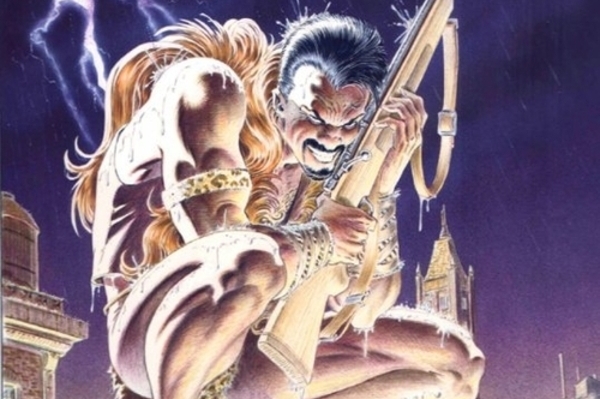 66. Kraven the Hunter
66. Kraven the Hunter
First Appearance: The Amazing Spider-Man #15
Best Writer: J.M. DeMatteis
Best Artist: Mike Zeck
Sergei Kravinoff is that special kind of weirdo with a skewed moral code and something to prove. A Russian big-game hunter after the most dangerous prey, Kraven’s pathological need to best Peter Parker led to what is arguably the greatest Spider-Man story arc ever told. His role in “Kraven’s Last Hunt” cemented his place in the annals of badassery; after apparently killing Spidey, Kraven “becomes” him and sets out to viciously prove he’s better (if not superior) to Parker. His infatuation with the wall crawler was always a little demented, but the conclusion of the arc places his neurosis in chilling perspective. — Robert Tutton
![]()
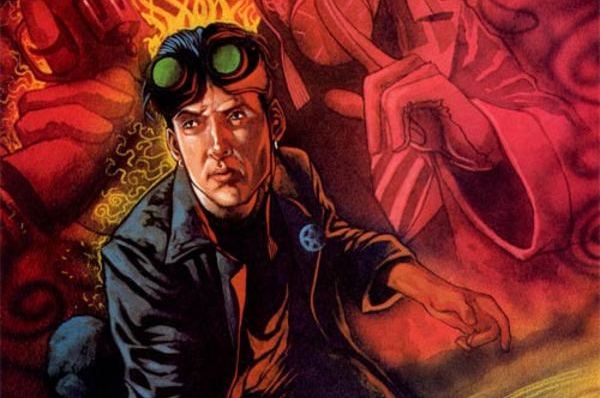 65. Jack Knight
65. Jack Knight
First Appearance: Zero Hour #1
Best Writer: James Robinson
Best Artist: Tony Harris
Not every comic book origin begins with its main character taking a sniper round through the chest, but that death preludes one of the greatest superhero stories ever told. Jack Knight is the archetypal reluctant hero. More content among trinkets in antique shops, Jack takes up the family mantle of Starman after his brother’s untimely death. Though he wrestles with his new found responsibility, he quickly embraces his family’s legacy with his own undeniable style.
Jack unites everything we love about superheroes. He has a polished moral code, overcomes overwhelming physical and emotional obstacles with a personality readers can easily relate to. And like every great TV show or music group that’s ever existed, he knows when to make a tasteful exit. The only lasting memory we have of Jack’s time as Starman is found whenever Courtney Whitmore, more commonly known as Stargirl, brandishes Jack’s hand-me-down cosmic rod.
— Darren Orf
![]()
 64. Mary Jane Watson
64. Mary Jane Watson
First Appearance: The Amazine Spider-Man #25
Best Writer: Sean McKeever
Best Artist: John Romita, Sr.
Mary Jane’s been the emotional anchor of the Spider-Man universe for nearly five decades, but she shines brightest in a series of her own. She’s at the center of the action in Sean McKeever’s Spider-Man Loves Mary Jane, which focuses on the horrors of high school rather than the threats of supervillains. Sure, she’s a beautiful, popular cheerleader — meaning you’d have every reason to hate her guts — but a brain full of original thoughts, a giant heart and a well-crafted combination of strength and vulnerability make Mary Jane totally endearing. — Hillary Brown
![]()
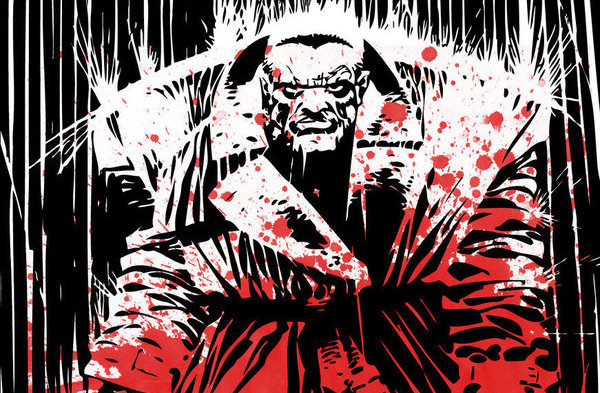 63. Marv
63. Marv
First Appearance: Sin City: The Hard Goodbye
Best Writer &Artist: Frank Miller
Love him or hate him, it’s hard to deny that Frank Miller has created some truly memorable characters throughout his career. Chief among them is Marv, the “Conan in a trench coat” from Miller’s film noir playground Sin City. A hulking behemoth whose scarred face gives the impression of someone who’s made all the wrong decisions in life, Marv nevertheless reveals himself to be quite the badass antihero in his relentless pursuit of the men who murdered his one-night stand. In a world where morals are all but nonexistent, there’s something to be said for Marv’s gladiator-like ethos — even if it does involve leaving fountains of blood and gore in his wake. — Mark Rozeman
![]()
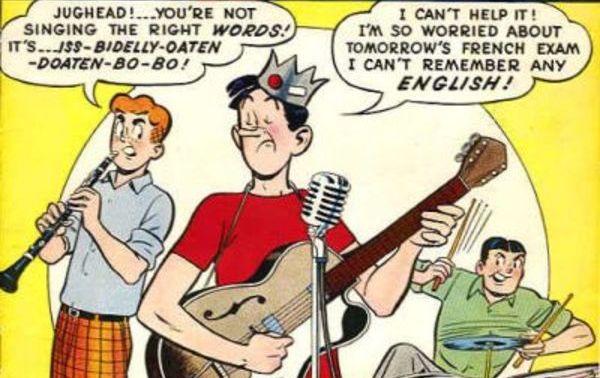 62. Jughead Jones
62. Jughead Jones
First Appearance: Pep Comics #1
Best Writer & Artist: Bob Montana
Jughead’s way more interesting than Archie, especially for the kind of nerds who get too invested in comic books. The prototype of the wacky sidekick, Jughead’s distinctive hat, love of food and complete disinterest in sex and romance makes him the favorite of most elementary school boys flipping through a Double Digest at the grocery store. — Garrett Martin
![]()
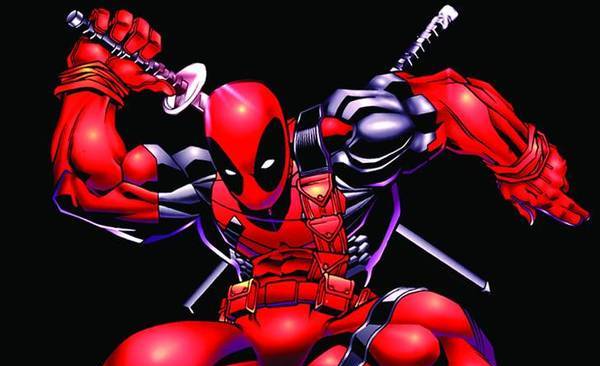 61. Deadpool
61. Deadpool
First Appearance: New Mutants #98
Best Writer: Fabian Nicieza/Joe Kelly
Best Artist: Ed McGuinness
In comic books, there are well-known archetypes: the meathead, the idealist, the cynic, the comic relief. Then there’s Deadpool, a being who’s completely unlike any character in the Marvel Universe. What makes him one of Marvel’s best heroes? Like us, he’s in on perhaps the greatest joke of all — that his universe isn’t real and every hero or villain around him exists for the readers’ amusement.
When he’s not busy breaking the fourth wall, Deadpool fights alongside the X-Men, the Avengers or any other team that’s crazy enough to welcome him aboard. His lethal swordplay and dead-eye gunfighting is matched only by his frightening psychosis — a mind in constant dialogue with itself, each word dripping with madness. With all evidence to the contrary buried beneath mental scarring, there’s a man who’s still a hero. — Darren Orf
![]()
 60. Ultron
60. Ultron
First Appearance: Avengers #54
Best Writer: Roy Thomas
Best Artist: George Perez
For what could be your standard “Destroy all humans!” robot antagonist, Ultron offers so much more. There’s the whole Oedipal Complex between him, “father” Hank Pym, and Janet van Dyne, the Wasp. But he’s also responsible for giving us the Vision (and doing so in a way that involved both Wonder Man and the original Human Torch) and for having perhaps the most sinister design of any robotic menace in any pulp form. Oh, and I guess the Destroy All Humans thing counts for something, as well. — Michael Burgin
![]()
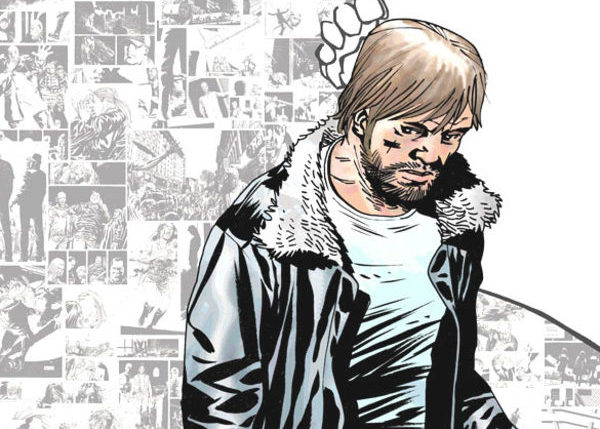 59. Rick Grimes
59. Rick Grimes
First Appearance: The Walking Dead #1
Best Writer: Robert Kirkman
Best Artist: Charlie Adlard
Fans of the TV show may have other favorite characters — the katana-wielding Michonne, redneck with a heart of gold Daryl or charismatic psychopath The Governor. But there wouldn’t be a TV show if the exploits of Rick Grimes hadn’t captured the attention of so many comic book fans. From the moment he wakes up in that hospital, the reality of his predicament presents itself in post-apocalyptic horror. But despite the stark black-and-white of Tony Moore and Charlie Adlard’s illustrations, what’s most interesting are the shades of gray presented throughout Robert Kirkman’s storytelling. Right and wrong aren’t always so clear to the sheriff, but as long as he continues to navigate his way through a zombie-filled world, we’ll keep following. — Josh Jackson
![]()
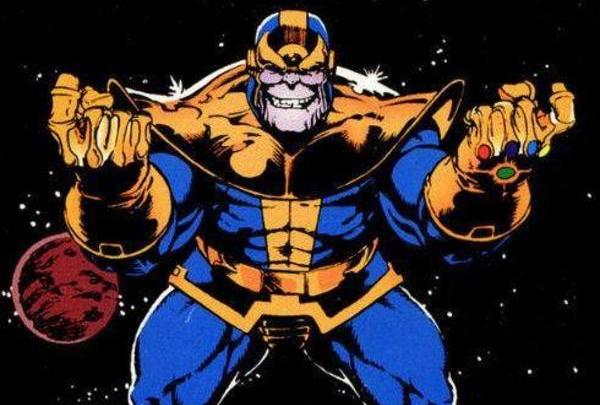 58. Thanos
58. Thanos
First Appearance: Iron Man #55
Best Writer & Artist: Jim Starlin
There’s an easy two-pronged measure by which one can judge a comic book villain: Who does he threaten? And how deadly is the threat posed? Since his thinner, less deadly debut in Iron Man #55, Thanos, the creation of writer-artist Jim Starlin, has proven himself one of the ultimate arch villains of the Marvel Universe. One of the few villains who can be considered an arch-enemy of multiple superheroes and superhero teams, Thanos has sought — and occasionally achieved — nothing less than absolute cosmic power. Why? Too kill off half or all of the living beings in the universe in an effort to woo his lady love, Death. His efforts have resulted in some of the most memorable Marvel story arcs of the last few decades (Infinity Gauntlets for all!) and made him a natural “end boss” for Kevin Feige to use in the Marvel Studios’ cinematic universe. Suck on that, Doctor Doom. — Michael Burgin
![]()
 57. Rorschach
57. Rorschach
First Appearance: Watchmen #1
Best Writer: Alan Moore
Best Artist: Dave Gibbons
If imitation is the greatest form of flattery, than Rorschach would constantly blush pink through his inky, gelatinous mask. As the driving force behind Alan Moore’s revolutionary Watchmen maxi-series, Rorschach helped introduce a brutal, hardboiled edge to comics along with Frank Miller’s grizzled Batman misanthrope in The Dark Knight Returns. The violent vigilante delivered such charming lines as “the accumulated filth of all their sex and murder will foam up about their waists and all the whores and politicians will look up and shout ‘save us!’ … and I’ll look down and whisper ‘no,’” while unraveling a massive conspiracy. Though the dark age of comics is met with as much cynicism as it is reveled in, nobody can deny that Moore and his sociopathic creation helped mature an entire industry with style.
— Sean Edgar
![]()
 56. Hawkeye
56. Hawkeye
First Appearance: Tales of Suspense #57
Best Writer: Matt Fraction
Best Artist: David Aja
“If I miss, it means I’m just another dude with a bow,” Hawkeye says in Avenging Spider-Man Vol. 1 #4. “It means I’ve been fooling myself this whole time. And that’s why I never miss.” Possessing no superpowers (besides the ability to change size during his story arc as “Goliath”), Hawkeye’s physical prowess and talent with a bow resulted from years of dedicated training. A mere mortal fighting alongside superheroes and a god, he epitomizes the ideal of what an ordinary “dude” can achieve. Sure, his romantic relationships are messy and he’s made decades of mistakes, but that only makes us admire him more. As the everyday man, Hawkeye makes us believe there’s heroic potential within us all. — Frannie Jackson
![]()
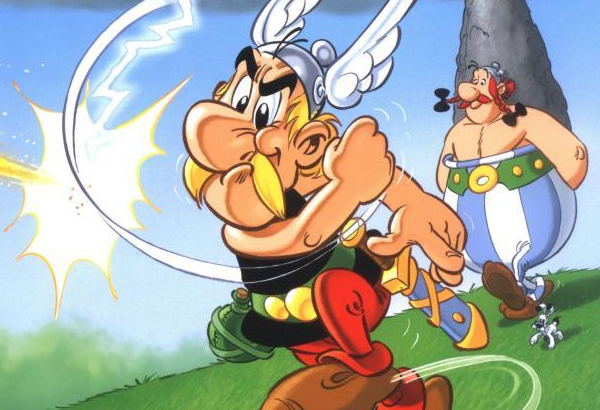 55. Asterix
55. Asterix
First Appearance: Pilote #1
Best Writer: René Goscinny
Best Artist: Albert Uderzo
While most Americans grew up on a steady diet of Marvel and DC, my first superhero was Asterix, a Gaulish warrior who fought back the would-be Roman conquerors with help of a strength-inducing potion and his faithful friend, Obelix. Despite their superhuman powers, it was usually Asterix’s cunning that got them out of whatever jam they found themselves in. Their village in Gaul was one of the few remaining hold-outs to the Roman army thanks to the duos’ deeds and magic concoctions of the Druid Getafix. The sharp writing of René Goscinny and the vibrant illustrations of Albert Uderzo proved that the U.S. didn’t have a monopoly on great comics in the 1960s and ‘70s. — Josh Jackson
![]()
 54. Alana
54. Alana
First Appearance: Saga #1
Best Writer: Brian K. Vaughan
Best Artist: Fiona Staples
Although we’ve had comics around for decades, there might be no mother — yes, as in literal birth mother — badder than Saga’s Alana. Although Saga might follow two never-meant-to-be lovers in the vein of Romeo and Juliet, the Landfall native hardly touches the role of damsel in distress. Instead, she touts the role of the good-natured, romance novel-reading, fierce mom who is an essential party in Saga’s galaxy-wide space hunt (and yeah, a bit more bad-ass than her horn-laden husband). While Alana still has so much growth ahead of her, we can’t wait to see where Saga’s creators take her next. — Tyler Kane
![]()
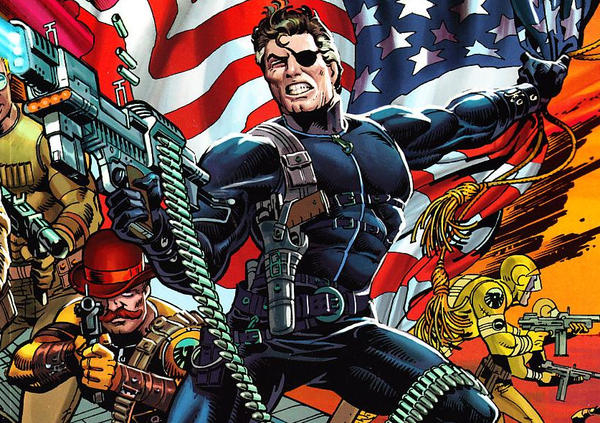 53. Nick Fury
53. Nick Fury
First Appearance: Sgt. Fury and His Howling Commandos #1
Best Writer: Jonathan Hickman
Best Artist: Jim Steranko
Imagine some of the most terrifying super villains in the Marvel Universe: Thanos, Galactus, Dr. Doom, Ultron, Magneto, Apocalypse. Now, imagine that you have to protect the earth from those baddies, both terrestrial and celestial, without any superpowers. Welcome to Nick Fury’s life. Although, even without super-powered backup (or depth perception), Fury still has unmistakable gravitas. When he’s on a page, he appears to exert his own powerful orbit where a world of chaos, pain and ass-kicking swirl around his unmovable center.
Of course, Fury also encompasses the 616 idea of “Big Brother,” but at his heart, he’s a soldier and a member of the Howling Commandos. In the Marvel Universe, there are heroes we love because, for the most part, they always walk on a moral high ground, such as Captain America, Professor Xavier, etc., but that’s only because Fury makes the tough calls for them behind the scenes. In many ways, Fury is the sole reason the sun still rises in the morning, and every Marvel superhero is just a means to his ultimate end. A brilliant tactician, a ruthless leader, and not entirely trustworthy — what’s not to love? — Darren Orf
![]()
 52. Grendel (Hunter Rose)
52. Grendel (Hunter Rose)
First Appearance: Comico Primer #2
Best Writer & Artist: Matt Wagner
The first to wear the mask of Grendel, Matt Wagner’s Hunter Rose was in many ways the anti-Bruce Wayne (with whom he faced off in a cross-over). Lives, both innocent and corrupt, were utterly ruined in the wake of his determination to become a criminal overlord, including his own. This ice-cold enigma looms the largest among the many who have held the Grendel mantel despite only a few appearances, and more recent expansions of his past exploits still haven’t peeled back all the layers of his psyche. Like the flower from which he takes his name, he possesses many layers, though there’s anything but sweetness and beauty at his core. — Zack Smith
![]()
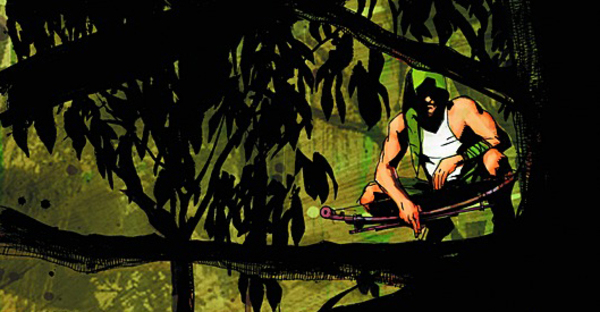 51. Green Arrow
51. Green Arrow
First Appearance: More Fun Comics #73
Best Writer: Andy Diggle
Best Artist: Jock
Oliver Queen, adrenalin-junky billionaire playboy, was stranded on a deserted island with only a bow, yet he emerged as Star City’s Emerald Archer, Green Arrow. It takes a lot of nerve to so thoroughly knock off Robin Hood — he even had a flower shop called Sherwood Florist at one point — but it’s that nerve that makes Ollie such an intriguing character. Whether he’s brawling with assassins or butting heads with the Justice League, Green Arrow does not back down. Sure, his trick arrows were a little cheesy, but shooting a boxing glove arrow is probably a lot harder than it looks. — Robert Tutton
![]()
 50. Miracleman/Marvelman
50. Miracleman/Marvelman
First Appearance: Marvelman Annual 1954
Best Writer: Alan Moore
Best Artist: Alan Davis
With the character’s origins as a Captain Marvel/Shazam rip-off and extremely convoluted publishing/rights history, it might be tempting to leave young Micky Moran off this list. But then one realizes, “This is a character for whom both Alan Moore and Neil Gaiman have written.” I mean, if only Frank Miller had put in a stint, the character would embody the 1980s trifecta of writerly goodness. With Marvel Comics having pretty much established ownership of the character, the future looks bright. But its past makes for a pretty good read as well. — Michael Burgin
![]()
 49. Beast
49. Beast
First Appearance: X-Men #1
Best Writer: Jason Aaron
Best Artist: Jim Lee
One of Xavier’s original X-Men, Hank McCoy is both brains and brawn. He’s as handy in an inter-dimensional battle as he is discussing literary classics. Appearing first as more of a broad shouldered monkey-man, he didn’t sprout that famous blue fur until the ‘70s. He made his way around the Marvel Universe, fighting alongside the Defenders, Avengers and X-Factor, and cured the mutant-killing Legacy Virus. More recently, he’s appeared as the Jean Grey School’s resident mad scientist and bamf-hunting vice principal in Wolverine and the X-Men. — Robert Tutton
![]()
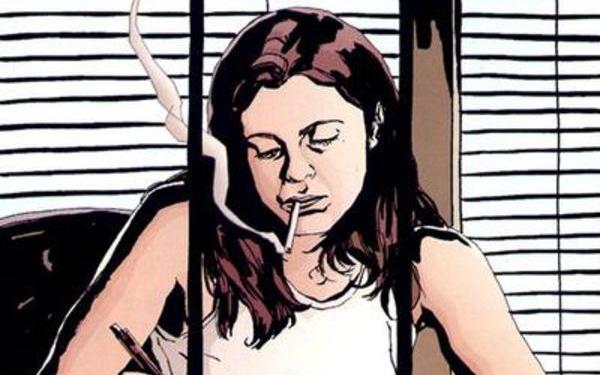 48. Jessica Jones
48. Jessica Jones
First Appearance: Alias #1
Best Writer: Brian Michael Bendis
Best Artist: Michael Gaydos
Although she’s become part of the Marvel Universe, Jessica Jones doesn’t have that long a history. Created by writer Brian Michael Bendis and artist Michael Gaydos, she made her debut in Alias, which ran from 2001 to 2004. Jones is less notable for her superhero powers, which are pretty generic (super strength, flying), than for her attempt to hang up her costume following a major trauma in which her mind was hijacked by the hypnotist villain Purple Man. Rather than exploiting abuse against women to create psychological depth in male characters, Jones’ story is a reaction against exactly that device. — Hillary Brown
![]()
 47. Snow White
47. Snow White
First Appearance: Fables #1
Best Writer: Bill Willingham
Best Artist: Mark Buckingham
One of the many fascinating females to occupy Bill Willingham’s Fables, Snow White is an ultra-capable administrator, a caring mother (to seven “pups”) and, as is demonstrated on multiple occasions, a ruthless, fearless defender of her own honor and integrity. Snow White is one of the core characters on which Willingham’s entire edifice is built, a living legacy no Prince Charming (real or would-be) can overthrow. — Michael Burgin
![]()
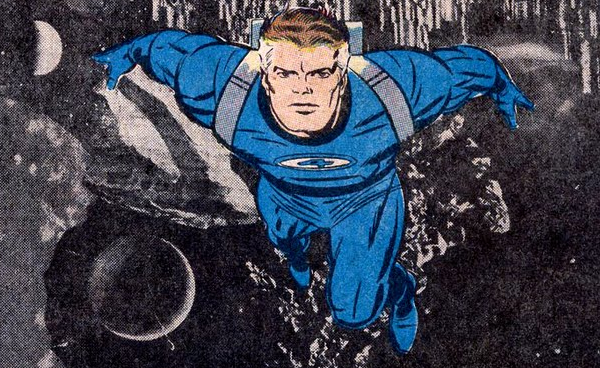 46. Mr. Fantastic
46. Mr. Fantastic
First Appearance: The Fantastic Four #1
Best Writer: Jonathan Hickman
Best Artist: Jack Kirby
Reed Richards has more on his plate than the average superhero. With his vast intellect, he’s the go-to guy for every super team when they need an impossible gadget to solve an unwinnable dilemma. He’s the leader of the most influential family of science heroes, whose New York stomping grounds are easily the most attacked on the planet, and his arch-enemies include a maniacal, magic-obsessed dictator and an intergalactic being whose favorite delicacy is planets. Oh, he’s also a full-time father to a girl with epic-level intelligence and a boy who creates galaxies in his spare time.
Reed is the glue that holds the Fantastic Four together — and that isn’t a reference to his elasticity. His genius allows him to see the endgame and all of the mechanisms invisible to those around him (okay, except his daughter). This scenario informs Mr. Fantastic’s most-referenced and relatable dilemma — the work-life balance. Even with all his abilities, super-powered or innate, Reed struggles with the same forces we all struggle with everyday — except if he makes the wrong decision, the Earth might get devoured by a giant purple man. You know … no pressure. — Darren Orf
![]()
 45. Katina “Katchoo” Choovanski
45. Katina “Katchoo” Choovanski
First Appearance: Strangers in Paradise #1
Best Writer & Artist: Terry Moore
Katchoo is punk rock, nonconformity and sexual expression smashed into a single heroine. More than a love interest to Stranger in Paradise’s main protagonist, Francine Peters-Silver, Katchoo symbolized a freedom that Francine could only dream about since their fateful introduction in the first issue.
Katchoo isn’t just Francine’s emotional foil; like every one of Terry Moore’s characters, she exists beyond one dimension. Despite a rough and sometimes (psychotically) violent exterior, Katchoo is a fierce friend who understands love and its emotional torments more deeply than the aloof Francine or the serious-minded David Qin. What Terry Moore was able to create in only 106 issues were characters, like Katchoo, who felt less like drawings on a page and more like close friends. — Darren Orf
![]()
 44. Gran’ma Ben
44. Gran’ma Ben
First Appearance: Thorn: Tales from the Lantern #1
Best Writer & Artist: Jeff Smith
What I love about Jeff Smith’s Bone series can be summed up in the character of Gran’ma Ben — wild, powerful and original at first glance with so much more happening under the surface. The plain-looking old woman lives humbly, raising (and racing against) cows, but her mysterious past is anything but. She suffers no fools and is the most ferocious fighter in the land, dispatching hordes of rat creatures in order to protect her granddaughter Thorn from ever-escalating dangers. Gran’ma Ben’s a character that can’t be judged on appearance if ever there was one. — Josh Jackson
![]()
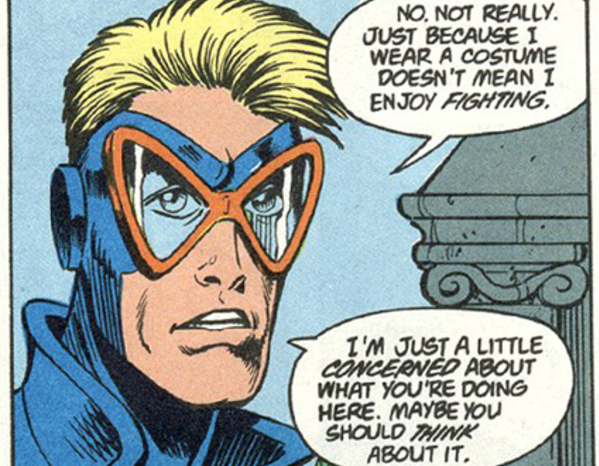 43. Animal Man
43. Animal Man
First Appearance: Strange Adventures #180
Best Writer: Grant Morrison
Best Artist: Chas Truog
Largely confined to the sidelines of the DC Universe during his early days, Animal Man came into his own in the ‘80s thanks to a reinvention courtesy of Grant Morrison. The psychedelic scribe took the underdeveloped character and turned him into one of the most politicized superheroes in comic history. For the past 20 years, Animal Man has taken a stand not only against the supernatural, but also against eco-terrorists and those who would harm animals. Not to mention, the conclusion of Morrison’s run features perhaps the most mind-bending, final few pages in the annals of comics — a conversation between Animal Man and Morrison himself. With this one scene, Morrison and Animal-Man took the idea of a comic book narrative to a whole other fourth-wall obliterating stratosphere. — Mark Rozeman
![]()
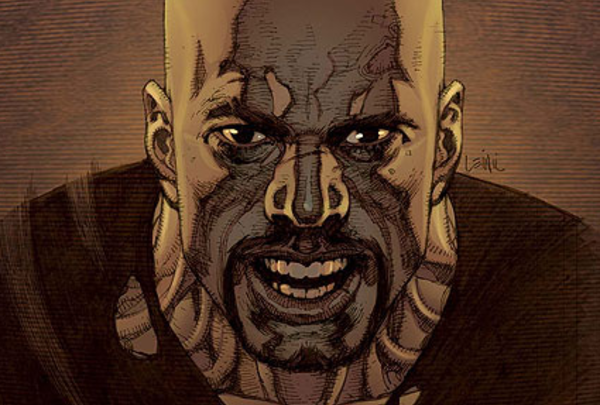 42. Luke Cage
42. Luke Cage
First Appearance: Luke Cage, Hero for Hire #1
Best Writer: Brian Michael Bendis
Best Artist: Leinil Francis Yu
Harlem’s favorite son always had a lot going for him, including near-impenetrable skin and a fancy tiara, but he’s also one of the select heroes who’s successfully grown into a family man. Brian Michael Bendis deserves most credit for padding out all of the proper dimensions for Cage, including his growing affection for his wife Jessica Jones and complete devotion to their daughter, Danielle. With this maturity, the brawler eventually took a leadership role in the New Avengers and Thunderbolts. Sweet Christmas, indeed. — Sean Edgar
![]()
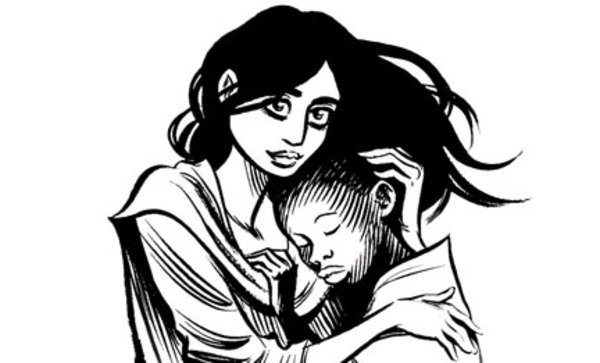 41. Dodola
41. Dodola
First Appearance: Habibi
Best Writer & Artist: Craig Thompson
In discussing Habibi, Craig Thompson’s bold, near 700-page opus, it’s impossible not to hone in on the wide-eyed protagonist Dodola. An exotic and spirited former child slave, Dodola’s journey to escape her past becomes one of the book’s primary emotional arcs. Moreover, though the story appears to be set in a land more influenced by myth than reality, her adventure marks a heartbreaking critique of the continual exploitation of women in regions of the world today. Incorporating aspects of Islam, Christianity and Arabic numerology, Habibi often risks falling under the weight of its own ambition. It’s characters like Dodola that successfully bring the humanity and haunt the reader long after he or she has read the last panel. — Mark Rozeman
![]()
 40. Lex Luthor
40. Lex Luthor
First Appearance: Action Comics #23
Best Writer: Brian Azzarello
Best Artist: Frank Quitely
There’s only one human who could truly rival Superman, and yes, that human is a bald super-genius with a pretty decent Kryptonite supply. Luthor, whose not-so-solid business practices keep getting foiled by Superman, relies on his wit and technological prowess to get the upper hand. Without Luthor, Superman catching collapsing buildings and saving grannies wouldn’t enthrall an audience for seven decades. — Tyler Kane
![]()

39. V
First Appearance: V for Vendetta #1
Best Writer: Alan Moore
Best Artist: David Lloyd
Like many of the freshly-minted characters from the late ‘80s, V stems from the brilliant mind of Alan Moore. But unlike the comic book caricatures that make up the Watchmen cast, V stands for something a bit closer to reality. The Guy Fawkes-masked man’s intricately rigged destruction of the U.K. government is borderline terrifying, yes, but the blank-faced hero draws us in with his emotional backstory and limitless intellect. Although we never get a look at his face, he leaves us misty eyed at his explosive funeral. — Tyler Kane
![]()
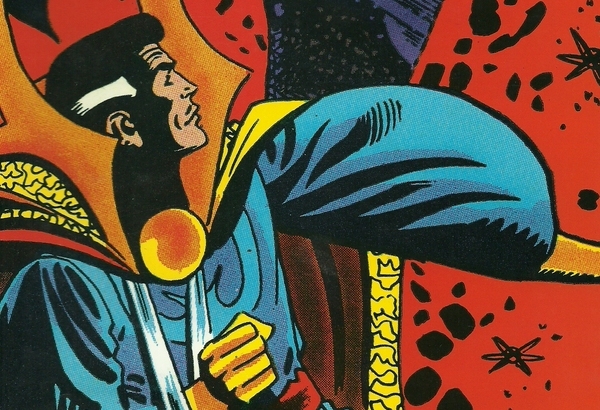 38. Doctor Strange
38. Doctor Strange
First Appearance: Strange Tales #110
Best Writer: Steve Englehart
Best Artist: Steve Ditko
Doctor Strange may initially seem like just another updated trope from pulps and radio serials — the Westerner who learns magic from exotic Easterners and immediately becomes the best guy ever at it — but he’s so much more. With a tragic background rooted in his own greed and arrogance, Strange has one of the most textbook Marvel origins, where the road to heroism starts with the character’s own personal failings. But he also fills an invaluable and unique role within the 616: he’s one of the few characters who retains the context and history of his ‘60s origins, cementing his status as one of the wise old pillars of the publishing line. Steve Ditko’s amazing artwork turned what could’ve been standard mystical hoodoo into some of the most mind-bending and unforgettable comics ever. The 17-part epic where Strange travels the universe and eventually meets Eternity is one of the four or five best Silver Age Marvel stories ever. — Garrett Martin
![]()
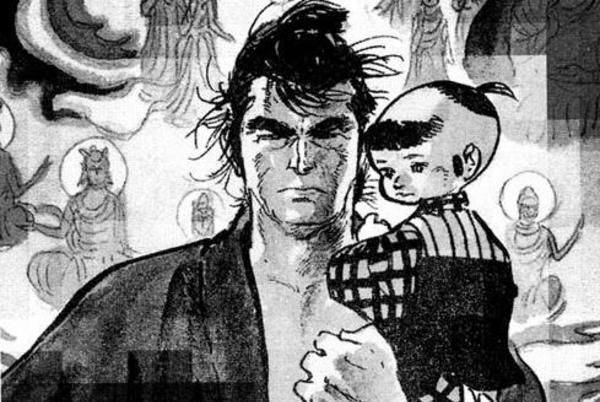 37. Lone Wolf and Cub
37. Lone Wolf and Cub
First Appearance: Lone Wolf & Cub: The Assassin’s Road
Best Writer: Kazuo Koike
Best Artist: Goseki Kojima
The story of disgraced executioner Ogami Itt? roaming the countryside for vengeance with his toddler Daigor? in tow, Lone Wolf & Cub almost hurts to read. With stark visuals and brusque interactions reveling in a grey morality where death and destruction are not only certain but almost desired, the 28-volume epic’s cultural footprints can’t be underestimated. Aside from inspiring movies, television adaptations and stage plays, the adventures of this unconventional family can be found in everything from Wolverine’s samurai detours (Frank Miller’s a massive fan) to Samurai Jack. The brutal intensity is palpable early on (Itt? assassinates a Buddhist Monk in the second story), but it truly climaxes with unexpected sentiment from both family members. This manga literature presents the zero-sum game through two of the most inspired characters in the medium’s history. — Sean Edgar
![]()
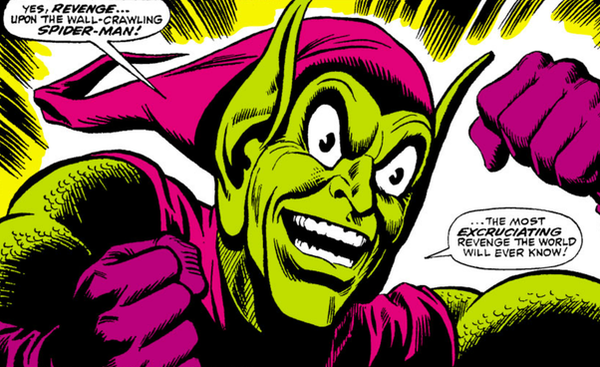 36. Green Goblin
36. Green Goblin
First Appearance: The Amazing Spider-Man #14
Best Writer: Gerry Conway
Best Artist: John Romita, Sr.
Spider-Man possesses one of the most the most vibrant rogue galleries in all of comicdom. Few villains, however, can truly claim to have as big an influence on the webslinger’s life than Norman Osborn and his murderous alter ego, the Green Goblin. Not only was the Goblin one of the first baddies to learn Spider-Man’s true identity, but he also single-handedly drove mainstream comics into a much darker space when he (directly or indirectly) caused the death of Peter’s beloved Gwen Stacy. Most of Spidey’s villains are driven by a desire for wealth or world domination; what makes the Goblin all the more frightening is that he’s driven less by material concerns and more by a desire to watch his nemesis suffer. — Mark Rozeman
![]()
 35. Enid Coleslaw
35. Enid Coleslaw
First Appearance: Ghost World
Best Writer & Artist: Daniel Clowes
One of two protagonists in Dan Clowes’s Ghost World, Enid is notable for exemplifying E.M. Forster’s notion of the “round” (as opposed to “flat”) character. She’s even more notable for being just as cynical and cranky as Clowes’ far more numerous male characters. Teenage girls, in particular, get the short shrift in comics as Betties and Veronicas, but Enid is spunky, dangerous and recognizably human. In Ghost World, Enid brings her glorious three dimensions to the trials of adolescence. — Hillary Brown
![]()
 34. Scott Pilgrim
34. Scott Pilgrim
First Appearance: Scott Pilgrim’s Precious Little Life
Best Writer & Artist: Bryan Lee O’Malley
Let’s be honest: Scott Pilgrim is pretty unremarkable. He’s an average guy in an average band with average friends. He binges on pizza, sleeps the days away and lacks direction in his life. So why do we care about him — let alone rank him among the likes of Batman and Superman? Because we are Scott Pilgrim. At some point in our lives — it could be 20 years ago, it could be yesterday — we found ourselves headed nowhere, just going through the motions. And then we discovered someone or something worth fighting for: our own Ramona Flowers. The beauty of Scott Pilgrim’s journey isn’t that he evolves into a superhero (although he does kick the League of Evil Exes’ ass), it’s that he’s still an ordinary guy in the end. Scott Pilgrim embodies the best and worst versions of ourselves, and for that he is extraordinary. — Frannie Jackson
![]()
 33. Fone Bone
33. Fone Bone
First Appearance: Thorn: Tales from the Lantern #1
Best Writer & Artist: Jeff Smith
How could you not love Fone Bone? Courageous and loyal, Fone Bone possesses a dreamer’s spirit untarnished by the evil plaguing his world (or the chronic cynicism of his cousin, Phony Bone). Though his dependability and good-naturedness leave him perpetually friend-zoned by the girl he admires, he chooses to act with integrity regardless of the attention he garners. This pure-hearted protagonist from Jeff Smith’s iconic Bone series proves that heroes come in all shapes in sizes. — Frannie Jackson
![]()
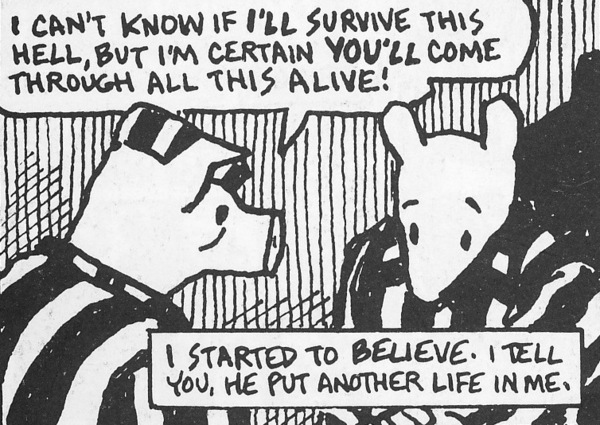 32. Vladek
32. Vladek
First Appearance: Maus I: A Survivor’s Tale: My Father Bleeds History
Best Writer & Artist: Art Spiegelman
A pioneering work in both comics and Holocaust literature, Maus envisions the Jewish people as anthropomorphic mice and Nazis as cats during WWII. Utilizing his father’s testimony of his experiences during the Holocaust, Art Spiegelman crafts Vladek as an intriguing character — grumpy, anal retentive, slightly racist and, at times, emotionally cold. It’s Spiegelman’s refusal to whitewash his father, however, that adds to the power of the narrative. Like many around him, Vladek was not an inherently strong individual; rather, he was forced to become one in order to endure one of the darkest periods in history. Vladek’s story is one of many, but it’s a compelling portrait of how, even in the direst of circumstances, there can still be hope. — Mark Rozeman
![]()
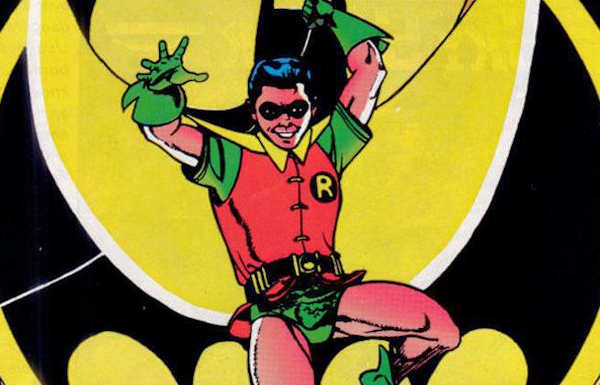 31. Robin (Dick Grayson)
31. Robin (Dick Grayson)
First Appearance: Detective Comics #38
Best Writer: Jim Starlin
Best Artist: George Perez
Robin’s green tights have been filled by many individuals — Dick Grayson, Jason Todd, Carrie Kelley and Stephanie Brown to name a few — but the role has always been the same: to inject a little color in contrast to the Dark Knight. As Batman co-creator Bill Finger noted, Gotham’s protector needed a someone to help him get out of his own head:
”I found that as I went along, Batman needed a Watson to talk to. That’s how Robin came to be. Bob called me over and said he was going to put a boy in the strip to identify with Batman. I thought it was a great idea.” Ever since his 1940 first appearance in Detective Comics, Robin has proven to be the sidekick a brooding dude like Batman demands. Between branding those signature ‘60s lines (“Holy atomic pile, Batman!”) to taking a few undeserved face-slaps to his most recent version’s untimely demise, it’s clear that Robin’s the only sidekick who deserves a spot in the Batmobile’s sidecar. — Tyler Kane
![]()
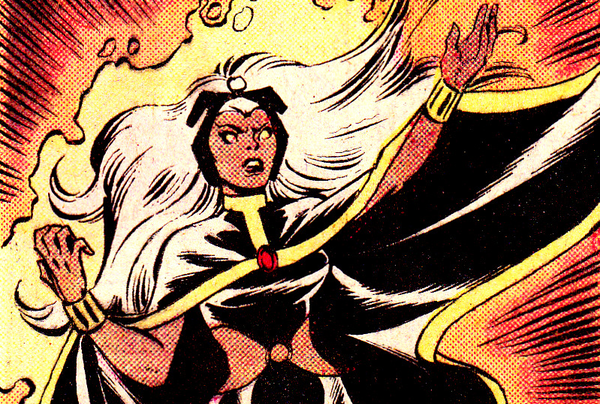 30. Storm
30. Storm
First Appearance: Giant-Size X-Men #1
Best Writer: Chris Claremont
Best Artist: Dave Cockrum
She’s an African Queen and former pickpocket who rides gales of wind and casts lightning from her fingertips. More importantly, Ororo “Storm” Munroe is singularly the only comic book character to successfully rock a white mohawk. Part of the international mutant wave from Giant-Size X-Men #1, Storm stands as a weathered leader who’s seen more than her share of hardship and trauma throughout her storied history; The Brotherhood of Evil of Mutants are chumps in comparison to her childhood spats with the telekinetic monstrosity known as The Shadow King. After Cyclops’ derailed murder of Charles Xavier, Storm remains a steadfast leader and unshakable foundation of the X-Men legacy. — Sean Edgar
![]()
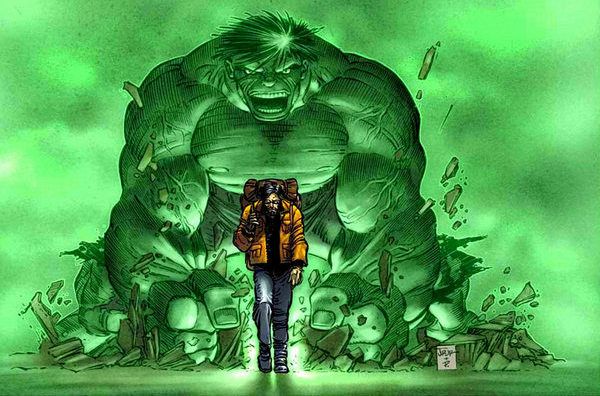 29. Hulk
29. Hulk
First Appearance: Incredible Hulk #1
Best Writer: Peter David
Best Artist: John Romita, Jr.
Hulk is the Jekyll and Hyde of the nuclear-era. It doesn’t really matter if he’s green or gray, a Las Vegas enforcer or a rage-fueled monster, as long as we get to see him go smash. Part of why Bruce Banner and his inner berserker are so compelling is that they’re practically drowning in psychological baggage – from Banner’s abusive father and multiple personalities to his anger “issues.” But it’s the Hulk’s feats of absolute strength that keep readers in awe of the Jade Giant. He constantly does the unthinkable, whether it’s lifting Thor’s hammer or literally pulling a broken planet back together. — Robert Tutton
![]()
 28. Miyamoto Usagi
28. Miyamoto Usagi
First Appearance: Albedo Anthropomorphics #2
Best Writer & Artist: Stan Sakai
Usagi Yojimbo star Miyamoto Usagi has inhabited one of the most engrossing historical fiction universes in comics over the last three decades. Well, that’s not entirely true: he’s also cameoed in more than a few Teenage Mutant Ninja Turtles cartoons and made for one hell of an action figure. But the disciplined swordsman has served as the perfect travel companion throughout the epic adventures writer/artist Stan Sakai has created. Whether training under his Lord Mifune or traveling as a directionless Ronin, this rabbit bodyguard holds more gravitas and depth than any other anthropomorphic animal. — Sean Edgar
![]()
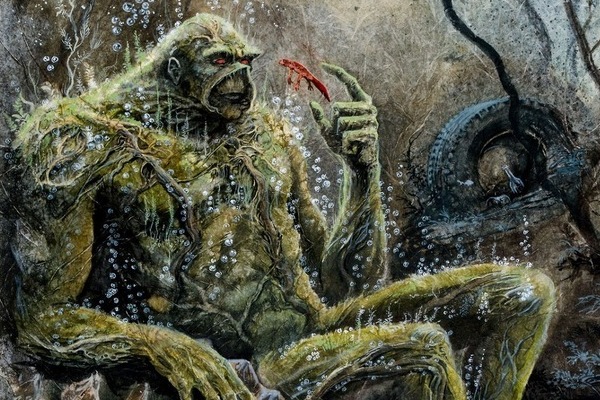 27. Swamp Thing
27. Swamp Thing
First Appearance: House of Secrets #92
Best Writer: Alan Moore
Best Artist: Stephen Bissette
Somewhere between the campy horror of the Creature from the Black Lagoon and the existential, Gothic anguish of Mary Shelley’s Frankenstein lies Swamp Thing. Yet another character plucked from obscurity in the ‘80s after being dropped into the hands of a maniacally brilliant British writer (Alan Moore in this case), Swamp Thing has seen his frightening green visage employed for everything from straight-up EC-influenced scares to heady treatises on environmentalism and the darkness of humanity. Filled with some of the most surreal, lush imagery witnessed in superhero comics, Swamp Thing and his titular book represent a major step forward in comics’ transition from mindless entertainment to high art. — Mark Rozeman
![]()
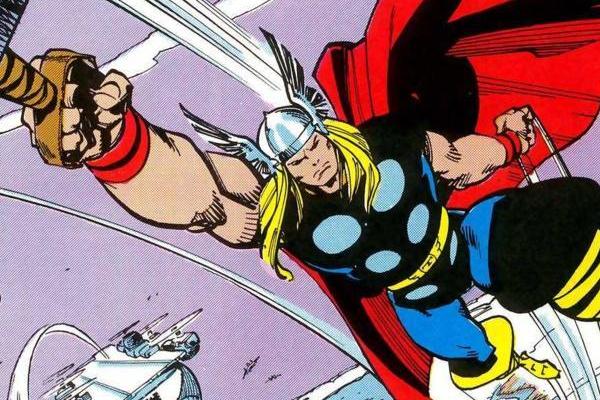 26. Thor
26. Thor
First Appearance: Journey into Mystery #83
Best Writer & Artist: Walt Simonson
What do you do when you need a hero to rival the strength of the Hulk? If you’re Stan Lee, you take cues from Norse mythology and craft a god. Then you bless said god with luscious locks and daddy issues, and BOOM you get Thor. The warrior god has suffered through his fair share of identity crises and bouts of being mortal (Odin sure fancies the “tough love” approach to parenting), but his devotion to Earth and its inhabitants never falters. Embodying an intriguing blend of unbridled brawn and compassion, Thor proves that power and empathy are not mutually exclusive. — Frannie Jackson
![]()
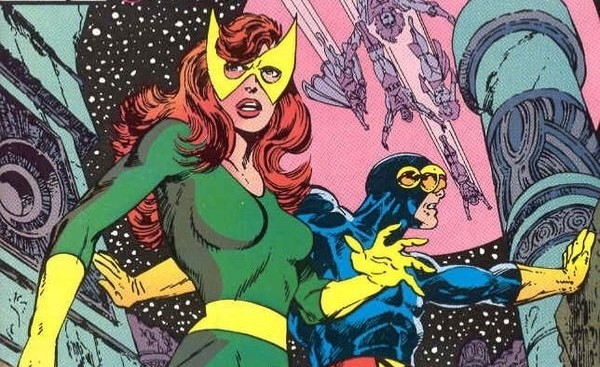 25. Jean Grey
25. Jean Grey
First Appearance: X-Men #1
Best Writer: Chris Claremont
Best Artist: John Byrne
Without “The Dark Phoenix Saga,” Jean Grey probably wouldn’t be on this list, but man, “The Dark Phoenix Saga”! The transformation of Jean Grey/Marvel Girl to Phoenix itself was memorable enough — a powerful accompaniment to the freshly minted New X-Men — but the arc that ultimately led to her doomed last stand alongside Cyclops on the moon represents one of the most memorable, traumatic deaths in the history of comics. Sure, Jean Grey’s death wasn’t permanent, but the scars it left on impressionable readers? They aren’t going anywhere. — Michael Burgin
![]()
 24. Judge Dredd
24. Judge Dredd
First Appearance: 2000 AD #2
Best Writer: John Wagner
Best Artist: Carlos Ezquerra
Judge Dredd is the militant, take-no-bullshit patron of adult comics, ushering in a darker, weirder, heavier era to whitewash the sterling optimism of the Silver Age. Dredd excels in simplicity: he doesn’t take off his mask, he doesn’t talk much and, like many characters on this list, he kicks all kinds of ass. Whimsical levels of ass. Objectively, Dredd kicks so much more ass than any other character on this list, (mild spoiler alert) Wolverine included. A Street Judge of Mega-City One, Dredd is Judge, Jury and Executioner to the saturated decadence and violence that consumes a future on the edge of implosion. While a freakish rogue’s gallery awaits Dredd around every corner, Judge Death has always been Dredd’s arch-enemy, providing a new level of existential conflict to a man, his motorcycle and his myriad guns. Creators John Wagner and Carlos Ezquerra achieved something profoundly special by crafting a dystopian cop who fights the personification of mortality, and it would be a crime to consider Dredd as anything less than iconic. — Sean Edgar
![]()
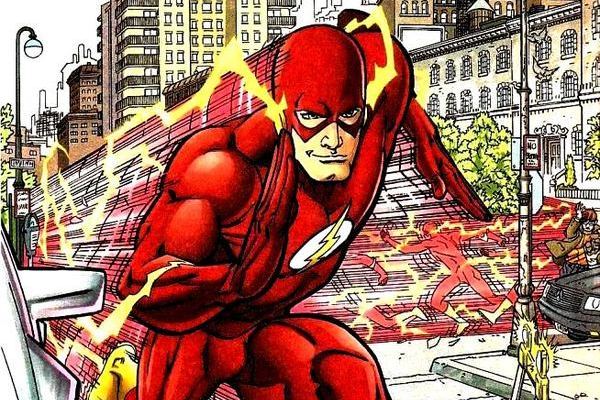 23. The Flash (Wally West)
23. The Flash (Wally West)
First Appearance: The Flash #110
Best Writer: Geoff Johns
Best Artist: Scott Kolins
The Scarlet Speedster is a legacy. To hold the title of “The Flash” is an honor that bestows more than just the power of neck-breaking speed — it makes you part of a family unlike any other superhero mantle. This distinction has been held by many of DC’s most memorable characters, but Wally West outshines them all. Ditching his yellow Kid Flash suit for the iconic red garb after Barry Allen’s heroic sacrifice in Crisis on Infinite Earths, West was loved as The Flash by fans for more than two decades. His most memorable run came at the talented hands of Geoff Johns and Scott Kolins, who dreamed up lasting relationships between West, a constantly growing team of speedsters and even his own rogue gallery.
Seeing West as The Flash is almost like watching your own kid grow up. He began as a young superhero unsure of his own abilities, became a rich playboy and finally grew into the scarlet costume. We once might have doubted whether or not West could fill Allen’s shoes, but as West finally returns to the DC Universe, we question how we were able to get by without him. — Darren Orf
![]()
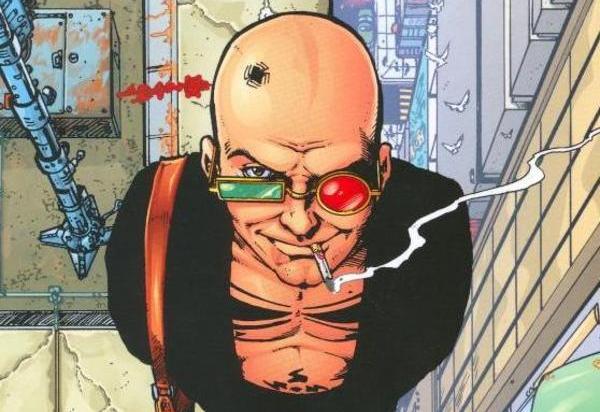 22. Spider Jerusalem
22. Spider Jerusalem
First Appearance: Transmetropolitan #1
Best Writer: Warren Ellis
Best Artist: Darick Robertson
Warren Ellis’ Transmetropolitan is the comic bookification of Hunter S. Thompson, the cult god-head of gonzo journalism, and that’s exactly why it works. In protagonist Spider Jerusalem, we see all the humor and depravity ascribed to the Thompson legend turned loose on a corrupt techno-metropolis. From his abrasive interview style to his liberal wielding of a bowel disruptor, he’s a master at pissing people off. Jerusalem also happens to be an impressive journalist; the sight of him perched on a rooftop, surrounded by strippers as he chronicles the bloody riot unfolding on the streets below, remains both stirring and iconic.
— Robert Tutton
![]()
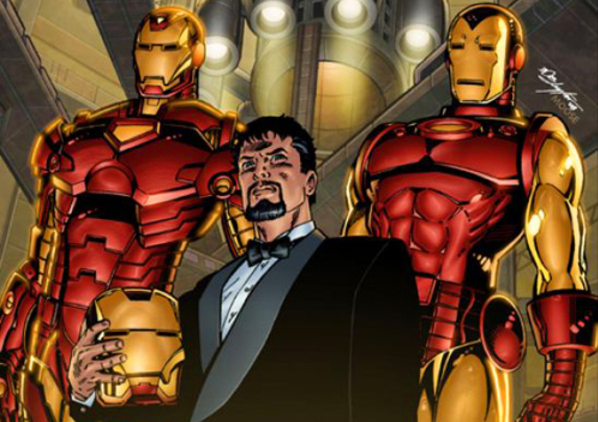 21. Iron Man
21. Iron Man
First Appearance: Tales of Suspense #39
Best Writer: David Michelinie
Best Artist: Bob Layton
Is there anything Tony Stark can’t do? He attended MIT at age 15, built the original Iron Man suit in a cave, helped establish SHIELD, served as the U.S. Secretary of Defense and delivered a baby. Oh, and he evolved into a superhero not through a radioactive spider bite or exposure to gamma rays, but through pure intelligence. No, there’s nothing this genius billionaire playboy philanthropist can’t do. With everything going for him, you’d think it would be easy to hate Tony Stark’s guts – but it’s not. Iron Man displays a depth of vulnerability few heroes have – even contemplating suicide and nearly drinking himself to death. Tony Stark is our hero because, beneath the suit and that devilish grin, he’s the kind of man who attends AA and learns from his mistakes. Okay, and because he’s a badass. — Frannie Jackson
![]()
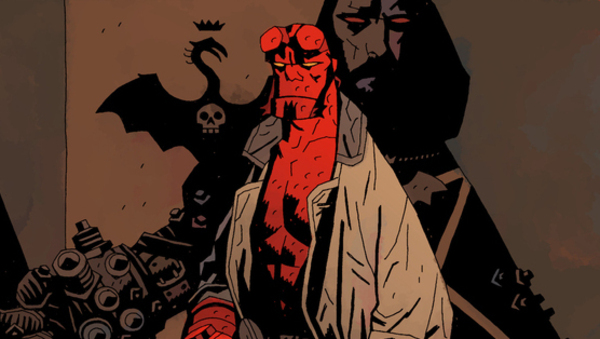 20. Hellboy
20. Hellboy
First Appearance: Dime Press #4
Best Writer & Artist: Mike Mignola
Introduced in 1993, hulking paranormal investigator Hellboy spent the majority of his life battling both mythological monsters and his looming destiny as the Beast of Revelations. Writer and artist Mike Mignola crafted a post-modern treasury of folklore, myth and religion, illustrated in angular panels dripping with atmosphere and action. The comic ushered decades of gothic and pulp influences into a streamlined narrative that reintroduced the macabre to a new generation. At its heart, though, Hellboy’s greatest accomplishment is a lead who quietly declines the violence and dogma of a heavy crown, embracing a humanity he was born to oppose. — Sean Edgar
![]()
 19. Jesse Custer
19. Jesse Custer
First Appearance: Preacher #1
Best Writer: Garth Ennis
Best Artist: Steve Dillon
Garth Ennis and Steve Dillon’s Preacher has influenced so many mainstream comics since wrapping its 75-issue run in 2000 that it could almost appear dated, yet antihero Jesse Custer still manages to make white jeans seem cool as hell. Imbued with the divine power to command others with his voice, Jesse tackles a series of adventures in the most profane Western ever created. Ennis loves nothing more than to poke people in the eye, but Jesse displays moments of sublime reflection in his self-destructive journey to subvert authority and upset order.
— Hillary Brown
![]()
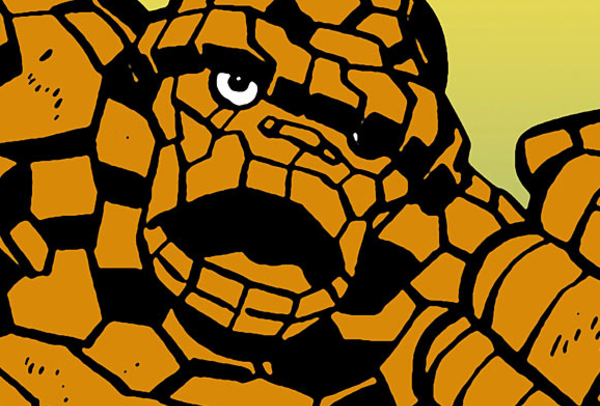 18. The Thing
18. The Thing
First Appearance: The Fantastic Four #1
Best Writer: Stan Lee
Best Artist: Jack Kirby
The Thing’s big ugly mug used to be Marvel’s logo, before a certain webspinner stole kids’ hearts. Ben Grimm remains the heart of the Marvel Universe, though, because he’s pretty much the guy who created it. Jack Kirby laid most of the foundation of the Marvel Universe (with an assist from Stan Lee), and The Thing is basically Jack Kirby as a big orange rock monster. He’s gruff and often angry and depressed, but he’s also the warmest, funniest and (other than Captain America) the most fundamentally decent superhero in Marvel Comics. — Garrett Martin
![]()
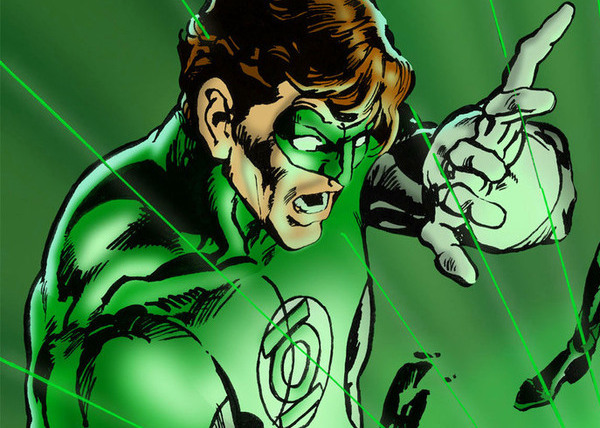 17. Green Lantern (Hal Jordan)
17. Green Lantern (Hal Jordan)
First Appearance: DC Showcase #22
Best Writer: Geoff Johns
Best Artist: Neal Adams
Cocky test pilot, sterling hero, homicidal tyrant and rousing redemption story, Hal Jordan stands as one of the top five icons of the DCU and an entry to the massive Green Lantern universe. Though Jordan is a bottomless well of history with highlights from the Justice League and adventures with Green Arrow, writer Geoff Johns stewarded a new mythos that grew directly from the character. Within Jordan, we not only find a hero who manifests his creativity through an all-powerful ring, but also a man who grew past his earthly limitations to flourish a galactic community of justice and hope. — Sean Edgar
![]()
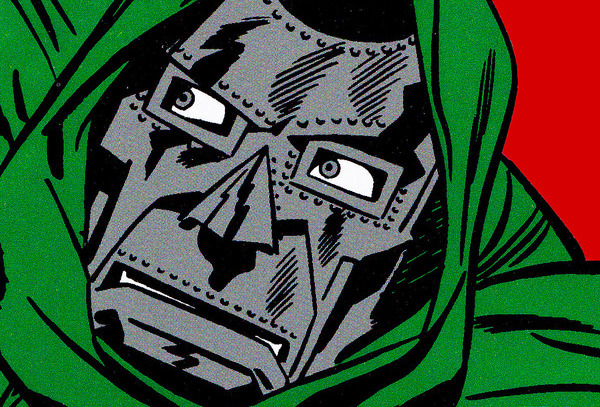 16. Doctor Doom
16. Doctor Doom
First Appearance: The Fantastic Four #5
Best Writer: Stan Lee
Best Artist: Jack Kirby
Victor von Doom is both the archetype and repository for a host of villain tropes. Is he a genius? Sure, and a mad one to boot! Ego? Oh man, does he have one, what with being determined to take over the world and to defy death and Mephistopheles (the latter for dear ol’ mama). Disfigured? Totally not his fault! He wants your women. He wants your obedience. And no matter how big the threat or the promise of gain, Doom always works his own angle. Frankly, I’m surprised the villain has tolerated Tom Hiddleston’s Loki taking credit as the big bad of the Marvel Universe on the silver screen. No way Doom would approve.
— Michael Burgin
![]()
 15. Scrooge McDuck
15. Scrooge McDuck
First Appearance: Dell Four Color Comics #178
Best Writer & Artist: Carl Barks
Introduced by writer/artist Carl Barks as a greedy uncle for a one-off Donald Duck story, Scrooge soon became the driving force behind treasure-hunting adventures around the world (and beyond). His cantankerous, money-crazed persona is tempered by a sympathetic backstory from Barks, showing how the millionaire waterfowl earned every dime of his immense wealth through hard work and cunning. This simple setup has fueled decades of stories, the animated series DuckTales and, more recently, a new series of acclaimed reprints of Barks’ classic comics by Fantagraphics. Long may Scrooge McDuck continue to dive, gargle and hoard an excessive mass of gold coins. — Zack Smith
![]()
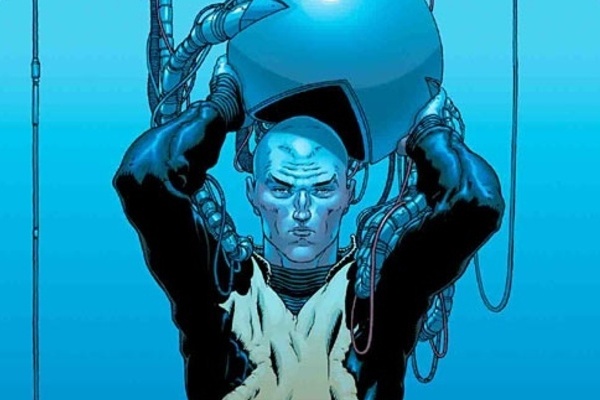 14. Professor X
14. Professor X
First Appearance: X-Men #1
Best Writer: Chris Claremont
Best Artist: Frank Quitely
If the X-Men are a superhero allusion to the civil rights movement of the ‘60s, then Professor Charles Xavier stands as its Martin Luther King, Jr., peacefully guiding the coexistence of man and mutant through education and intervention. Well, at least that was the initial idea. Writers have since used Xavier as a symbol of what men compromise to achieve unattainable dreams. Whether this includes sending child soldiers into horrific conflicts or ignoring the pleas of a hatchling consciousness inside the Danger Room, the mutant thought leader nearly rivals Nick Fury for collateral damage in pursuit of the greater good. Is he a bad man? No. Just complex, and borderline omnipotent in his power and influence. Though he may currently be “deceased,” we await the day Charles Xavier returns to stir the morality and direction of an entire species within the Marvel Universe. — Sean Edgar
![]()
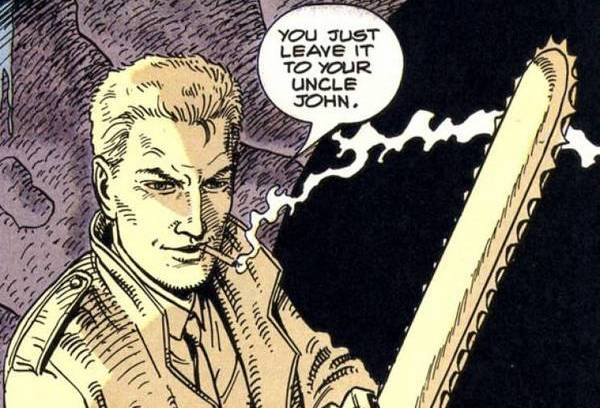 13. John Constantine
13. John Constantine
First Appearance: The Saga of the Swamp Thing #37
Best Writer: Garth Ennis
Best Artist: Steve Dillon
First introduced in Alan Moore’s The Saga of the Swamp Thing after artists Steve Bissette and John Totleben requested to draw a character who resembled Police frontman Sting, John Constantine is known more for making terrible decisions and pissing off malicious deities than plucking bass strings. And even though a boozing, womanizing conman might not sound revolutionary in passing, Hellblazer elevated the fledgling mature readers market of the ‘80s to new heights, enabling DC’s Vertigo imprint to publish some of the most compelling stories in the medium. More importantly, Constantine established a new breed of humanist antiheroes. There’s innate comfort in a character whose problems far exceed our own, and he transcends them with a middle finger pointed toward the unstoppable forces that legislate the rules he so flagrantly breaks. — Sean Edgar
![]()
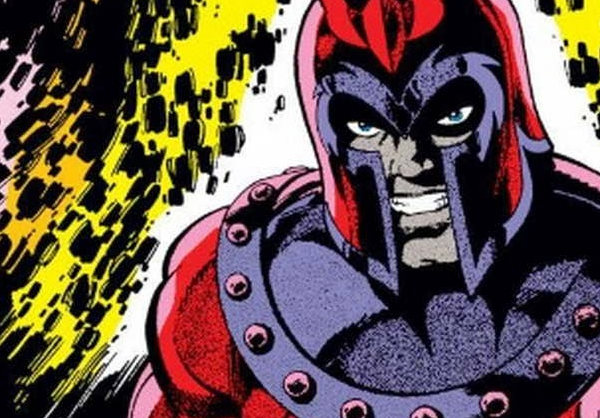 12. Magneto
12. Magneto
First Appearance: X-Men #1
Best Writer: Chris Claremont
Best Artist: John Byrne
Magneto was the first villain to ever face off against the X-Men and few have risen to his level of menace and sophistication since then. Though initially presented as little more than your standard megalomaniacal baddie, Magneto has since grown into one of the most complex characters in all of superhero comics. The character’s inner motivations have dramatically evolved over the years, with Stan Lee first positioning him as the militant, Malcolm X-like archetype who believed in force as the only viable means of survival. This further led to Chris Claremont’s much-celebrated run, which reimagined the Master of Magnet as a haunted Holocaust survivor who, having witnessed the absolute worst of humanity, fights so that the same fate will never befall his mutant brethren. Like all of the best villains, Magneto is a character who only fits into that qualification under the most narrow of definitions. — Mark Rozeman
![]()
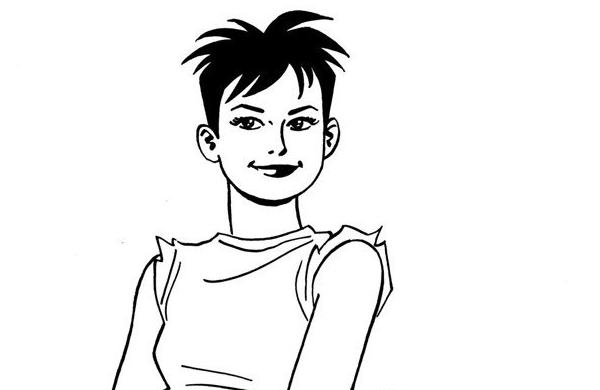 11. Esperanza Leticia “Hopey” Glass
11. Esperanza Leticia “Hopey” Glass
First Appearance: Love and Rockets #1
Best Writer & Artist: Jaime Hernandez
Hopey Glass is a wild, rotten little punk with a bad attitude who just can’t help how dang cute she is. One of the great pleasures of Jaime Hernandez’s recent Love and Rockets stories has been watching Hopey’s attempts to grow up. “The Education of Hopey Glass,” a collection of tales released in 2008, added tremendous depth to her character as she struggled with the demands of regular employment and tried to learn to bite her tongue. Hopey is all spikes and broken glass — a kid at heart — and, as children are, often thoughtless, selfish and wild. That she manages to be completely endearing and relatable to the reader speaks to Hernandez’s achievement in Hopey’s characterization. — Hillary Brown
![]()
 10. Margarita Luisa “Maggie” Chascarrillo
10. Margarita Luisa “Maggie” Chascarrillo
First Appearance: Love and Rockets #1
Best Writer & Artist: Jaime Hernandez
There is a strong case to be made that Maggie not only belongs on this list but merits a top slot. Although she’s only appeared in Jaime Hernandez’s Love and Rockets (rather than living on in the words and lines of other creators), Maggie’s evolving, deepening emotions since 1981 make her one of the most realized and substantial characters in the entire comics medium. She’s stereotypically feminine in many aspects — emotional, irrational, eats her feelings — but she also bends gender norms, as evidenced by her talent as a mechanic. Most of all, Maggie is riddled with flaws yet utterly lovable because of the dimensions they instill in her. — Hillary Brown
![]()
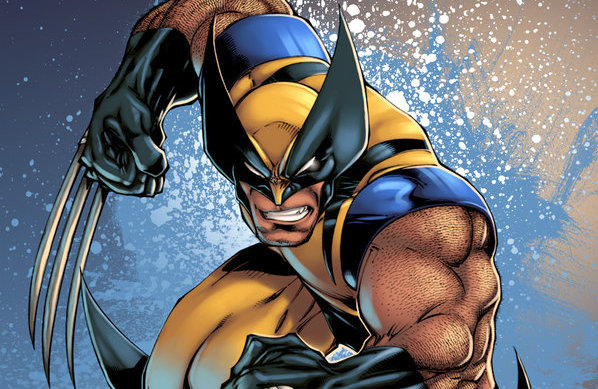 9. Wolverine
9. Wolverine
First Appearance: Incredible Hulk #180
Best Writer: Chris Claremont
Best Artist: Joe Madureira
Wolverine is the best at what he does, and what he does is make other characters look hopelessly inadequate. He’s a badass with a heart of gold and claws of adamantium, and while his mutant healing factor makes him nearly indestructible, it’s his scrappy attitude and bad temper that immortalize him a fan favorite. Since his debut in 1974, he’s been tossed around by the Hulk, beaten ruthlessly by Sabretooth and deboned by Magneto, but he keeps getting up. Wolverine’s come a long way over the years, now boasting a school of his own to guide the next generation of mutants and shadowed by his own potential death looming around the corner. — Robert Tutton
![]()
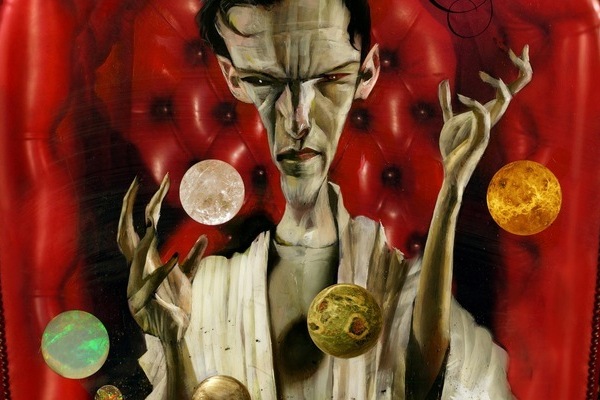 8. Morpheus
8. Morpheus
First Appearance: The Sandman #1
Best Writer: Neil Gaiman
Best Artist: Dave McKean
The protagonist of Neil Gaiman’s Sandman series took the form of a human, but he usually remained a distant mystery to the characters he encountered. Morpheus was The Lord of Dreams, one of The Endless, curious about humanity (and all other intelligent races) but mostly above or outside it. The Sandman’s relatable elements derive from the stories he shaped — he’s as much an author as a player for much of the series. But Gaiman is a uniquely gifted storyteller, and we came to love Dream for those stories and to see his humanity as he became more and more involved in the swirling events that ended the series in 1996. Morpheus, The Sandman, The Lord of Dreams was the heart of a title that redefined what comics could be. — Josh Jackson
![]()
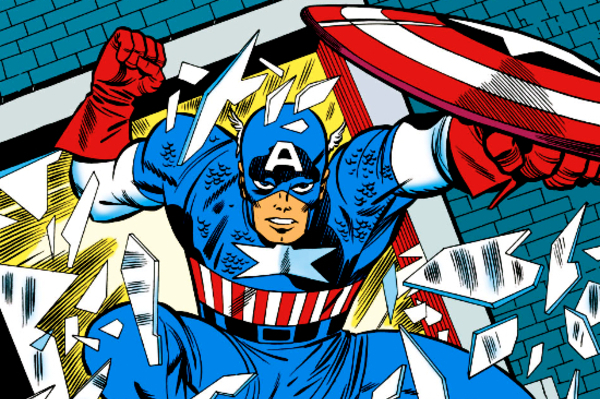 7. Captain America
7. Captain America
First Appearance: Captain America Comics #1
Best Writer: Ed Brubaker
Best Artist: Jack Kirby
Often posited as a heritage staple who would be better suited to the DC stables than the chaos of the Marvel 616, Captain America creates a moral nexus that has anchored The Avengers and beyond throughout the his 70-year plus history. Large credit goes to Mark Millar and Ed Brubaker for injecting a new sense of relevancy to the comics icon. Both authors took Cap’s conflict of Greatest Generation romanticism vs. Real Politik pragmatism to new heights, giving the Marvel Cinematic Universe its new thematic anchor. Though the Captain has yet to compromise his ethics (even for his Illuminati friends) for a grim and gritty makeover, that’s exactly what makes him so special: a persona so spectacularly devoted to benevolence and justice that he’s as much an ideal as a character.
— Sean Edgar
![]()
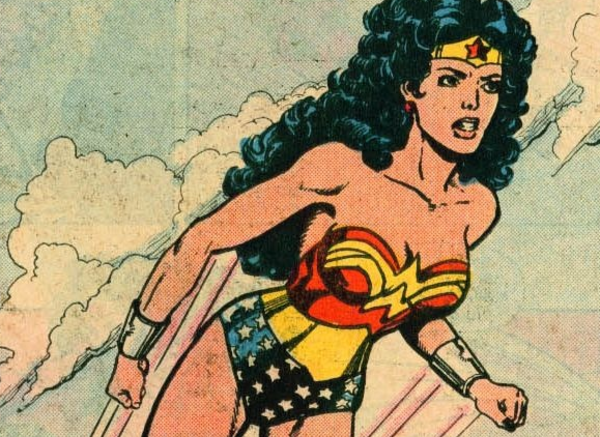 6. Wonder Woman
6. Wonder Woman
First Appearance: All Star Comics #8
Best Writer: Brian Azzarello
Best Artist: George Perez
William Moulton Marston, a psychologist who helped create the polygraph, conceived an amazonian warrior princess who flexed more power, restraint and moxie than any man ever could. Unsurprisingly, she also cast a golden lasso that forced the truth out of lying dudes. More than 60 years later, Wonder Woman still reigns as the archetypical female superhero, adding a legendary air and metric ton of grrl power to the Golden Age boys club. Today, she’s arguably wrapping one of her strongest arcs under the guidance of writer Brian Azzarello and artist Cliff Chiang (among others). Cast as the bodyguard of her Zeuss-sired stepsister against a parade of menacing Greek gods, Wonder Woman now stands at the center of a rich mythos that has added a new level of depth and cool to the DC Universe.
— Sean Edgar
![]()
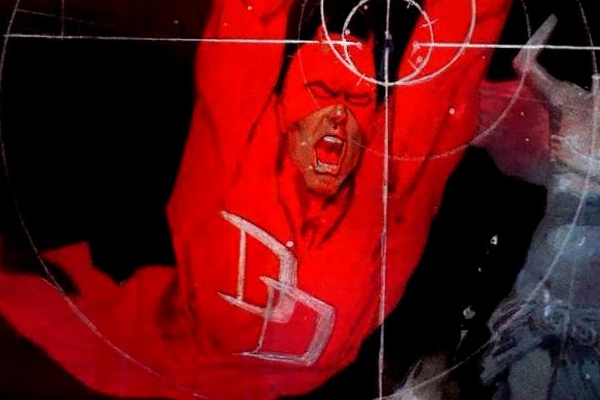 5. Daredevil
5. Daredevil
First Appearance: Daredevil #1
Best Writer: Frank Miller
Best Artist: Bill Sienkiewicz
For 50 years, Hell’s Kitchen has been protected under the sightless eyes of Daredevil. Contributing to Stan Lee’s “radiation is awesome” campaign, young Matt Murdock lost his vision when he got hit by a truck hauling radioactive waste. His hyper-sensitive remaining senses more than made up for his lost sight, allowing him to detect lies by listening to heartbeats and to develop a bat-like sonar. Frank Miller breathed a gritty, ninja-noir life into Murdock that still stands as one of the Daredevil’s best runs. He a complex character who has weathered some truly dark storms, but much like his father Battlin’ Jack, he never stays down. — Robert Tutton
![]()
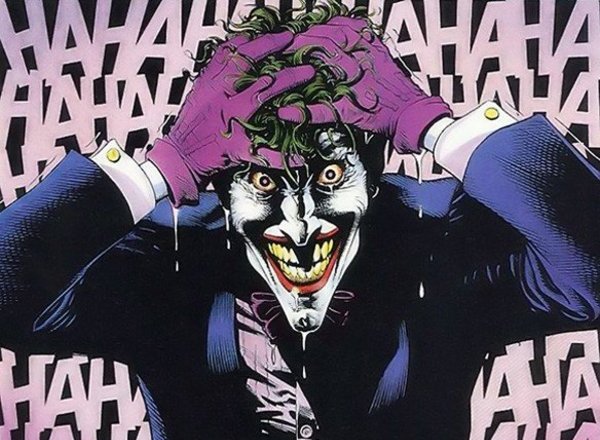 4. The Joker
4. The Joker
First Appearance: Batman #1
Best Writer: Alan Moore
Best Artist: Brian Bolland
Fans will argue that The Joker isn’t Batman’s totemic polar opposite. After all, shouldn’t Batman’s mortal enemy be The Hawk? The Weasel? The Owl? (Scott Snyder later tackles this last one in the first 12 issues of his Batman run). But Batman’s perfect foe will always be the rail-thin Man Who Laughs. In theory, the two are painfully similar: each is addicted to the superhero/villain game, just on different sides. And while the Dark Knight bashes heads in the name of justice, his opposite feeds on madness and disorder with an intense fixation on our hero that borders on romance. Evil and nonsensical, The Joker headlines some of our favorite Dark Knight tales including Alan Moore’s brilliant The Killing Joke, Ed Brubaker’s The Man Who Laughs and Snyder’s recent nail-biter Death of the Family. — Tyler Kane
![]()
 3. Superman
3. Superman
First Appearance: Action Comics #1
Best Writer: Grant Morrison
Best Artist: Curt Swan
If there’s one name that comes to mind when the word “superhero” is mentioned, no doubt it’s the Man of Steel himself. Clark Kent and his tight-donning alter ego have become American icons in pop culture, inspiring films, art, t-shirts, lunch boxes, expensive back-issues and countless bad tattoos. He’s a superhero who, as an alien with impossible powers, pulverizes any enemy in sight unless they’ve got Kryptonite. But he never kills his enemies (no, that’s not a misprint: Superman never kills enemies). — Tyler Kane
![]()
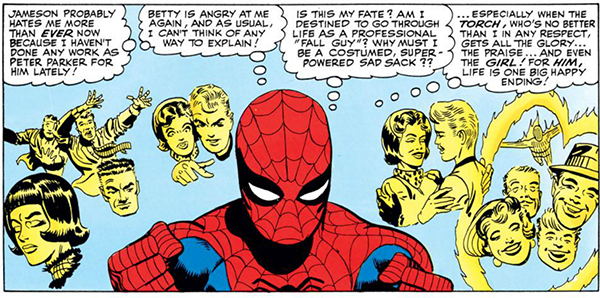 2. Spider-Man
2. Spider-Man
First Appearance: Amazing Fantasy #15
Best Writer: Stan Lee
Best Artist: Steve Ditko
The strongest argument for Peter Parker’s persisting relevance in the comic book realm is that he couldn’t have been created in any other medium. He’s a one-character confluence of comic book history up to 1962, and he’s also a direct appeal to the comic industry’s most enduring, youthful audience. Peter is a mash-up of at least four comic genres, a superhero with roots in the sci-fi and monster comics that Marvel peddled in the late 1950s, with a generous helping of romance and a veneer of Archie-style teen hijinks. Most crucially, he’s the first superhero to fully close off comics’ eternal wish fulfillment circle by being an awkward adolescent like his readers. Spider-Man made the reader the hero instead of the sidekick, with a canny understanding of the traumas most teens go through, both big and small. Peter Parker’s deep imperfections are what make him the perfect superhero.
— Garrett Martin
![]()
 1. Batman
1. Batman
First Appearance: Detective Comics #27
Best Writer: Frank Miller
Best Artist: Neal Adams
People will ask you about your first vivid memory, and the closest I can get is this one: I’m young — maybe four or five — it’s 5 A.M. and I’ve woken up my Dad to put together this still-sealed Batman playset. From what I can gather, he’d probably bought it the night before, and he’d agreed to set it up the next morning for reasons a four-or-five-year-old couldn’t understand. Bedtimes had factored in, but there’s also that crippling, adult version of tired. The kind that comes from not only working a full-time retail job in Saginaw, Michigan, paying bills, maintaining a home, but also from having a kid who is prone to waking you up at 5 A.M. to put together a Batman playset.
So we’re at the kitchen table. Our sole source of light in the house is a dim light hanging over the kitchen table. If he was irritated — which he had to be, thinking back in my mid-20s — I can’t read it on his face, not in this light. And no one was getting sleep until I had an assembled Batcave, which also turns into Wayne manor if you pivot the plastic walls a certain way. The toy was completed shortly before he needed to shave, shower, put on a suit and drive to work.
The Batcave would be the place where my brother and I would slam together plastic figures for years, until the thing eventually vanished, probably broken by some misstep or chewed up by the family dog. That set would later be replaced by LEGOs or skateboards, or even later by a darker hero, Spawn. But unlike any of those temporary stand-ins, The Batman and his ornate cave held my imagination for decades. It’s no surprise to me that we’re celebrating the 75th year of a man who dresses up in his black underpants and a cape as an American icon.
It’s funny, the things that sit in our memory for this long.
When you’re five, you don’t grasp the subtleties of Batman’s character. You might skip the comic book filler — the pages of dialogue detailing Bruce Wayne’s troubled childhood, the engaging twists and turns of Batman’s ever-evolving casework, Wayne’s yucky lady affairs, gross — to flip to the full-page spread of an expertly aimed Joker punch. Awesome. Maybe you have as much appreciation for Adam West as you do Frank Miller or Grant Morrison or Alan Moore.
Because at five, you just know that Batman’s awesome, from the cape and cowl to those pointy ninja-style arm cuffs. The rest comes later. I could stare at those bleak comic pages for hours or burn through VHS copies of Tim Burton’s great Batman films. I could request to watch “the shark episode” of the live action Batman series from the ‘60s, unironically, but it’d still be years down the line before I truly dug in. Batman stuck with me through my teens in the most casual sense; I’d read the rogue comic here and there, or not change the channel when those movies came on TV in the awkward battle of staying hip in high school. But I didn’t really return to the world’s best superhero until I was 18, when on my first day of college, the man who woke up at 5 a.m. to assemble my Batcave died in a car accident on his way to work.
Like Bruce Wayne, whose basis for creating The Batman stemmed from the loss of his own parents, I was left with all the confusion, anger and hurt of losing that rigid, paternal model of integrity. My source on all things on how to exist as a young man. My uncle, his brother, reassembled my sloppily knotted tie before my Dad’s funeral. It was a sad scenario that made it as clear as the pale moon light that my education wasn’t finished. But there I was, and the tale of a young man on the upswing from tragedy surely resonated in the years that followed, and Batman issues and graphic novels amassed in my room. My favorite shirt in college read I Believe in Harvey Dent. It was my favorite topic of argument at booze-fueled college parties.
Under the circumstances, it’s not hard to understand why. There’s that argument you’ve listened to a million times — in comic shops, after a night out at the movies, across playgrounds worldwide — but it does still ring true for me. Batman’s not like Superman or Spider-Man or Animal Man (really any of the comic “man”s). Bruce Wayne wields zero powers beyond being rich as hell, yes. But a multimillionaire’s perks do not extend to pulling your own body weight over a building’s ledge with your fingertips after a vicious Bane beating. Batman and Bruce Wayne are American icons, because they’re both proof of where the human spirit can go after it fully collapses. And oh yes, they are parallels for all of us, whether we’ve gone through tragedy or not.
In his 75 years, Batman’s fought madness with The Joker, solved life’s unexpected questions with The Riddler, neutralized the blind rage and anarchy of Bane and confronted his own mortality in Frank Miller’s incredible Dark Knight Returns comics. The Batman we know today — made most popular in American culture by Burton and furthered by Christopher Nolan’s grim blockbusters — faces it all with the unwavering moral set some of us aspire to — even if it’s hard to hold back the punch that’ll send the Joker into a permanent coma.
Batman‘s pages hold keys to smashing adversity in the face, hopefully right after splashing through a skylight. They’ve got more raw, cathartic escapes than you could hope for in a boxing career. Batman is taking back control, no matter how impossible it might seem. He’s hope in what one person can do when your whole damn life feels hopeless. He’s an unwavering symbol of integrity when our color-splashed world doesn’t leave many things black or white.
That’s not to say he’s perfect. No hero is. Batman’s overcast world can be hard to visit regularly in the same way that it gets boring to see another red-underpantsed “man” save an elderly woman from a collapsing building. Swamp Thing’s in-tune-with all mentality can get as tired as Professor X’s pedantic battle against Magneto. Iron Man is an asshole. Spider-Man kinda loses out in the tragedy battle early on, and maybe that’s what puts the “friendly” in “neighborhood Spider-Man.”
But what’s most refreshing is that, a full lifetime after the birth of The Bat, there are still fresh stories to be told. In the last decade, Nolan revitalized the character for (what I believe to be) Batman’s best movies. Scott Snyder and Greg Capullo are spinning inspired yarns that still show that Batman is as intriguing, mysterious and brooding as ever on the page. (Really, if you don’t believe me, read Snyder’s Court of Owls collection and you’ll be sucked down their great run of 30-issues-and-counting).
That’s why today, if I need a pick-me-up, chances are I’m headed out to the comic shop. Batman is always on the top of the stack. He’s the window-smashing, disappearing-behind-your-back hero the human spirit sometimes needs, and he brings along the beautiful stories that comic and pop-culture fans deserve. And if you’re going through some shit, therapy’s great. A healthy diet and regular sleep schedule will do you wonders. But I’d also recommend Batman. — Tyler Kane
GET PASTE RIGHT IN YOUR INBOX
The best music, movies, TV, books, comedy and more.